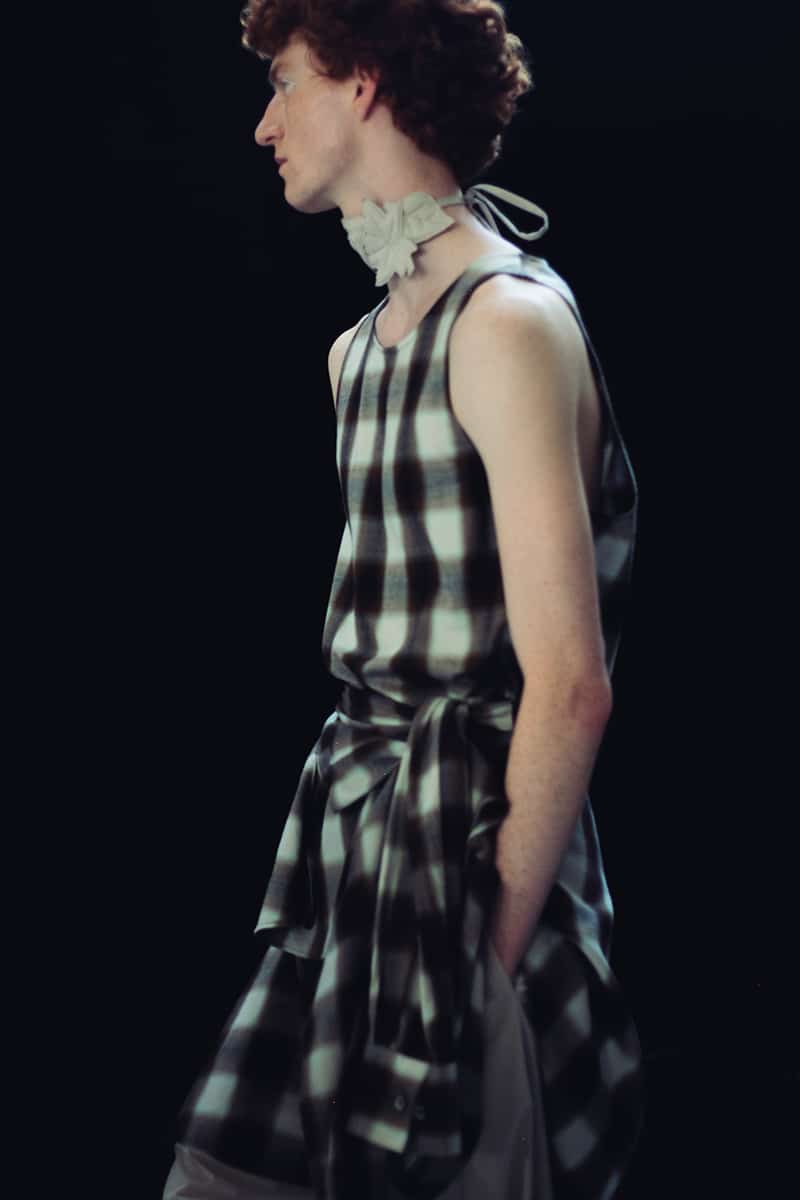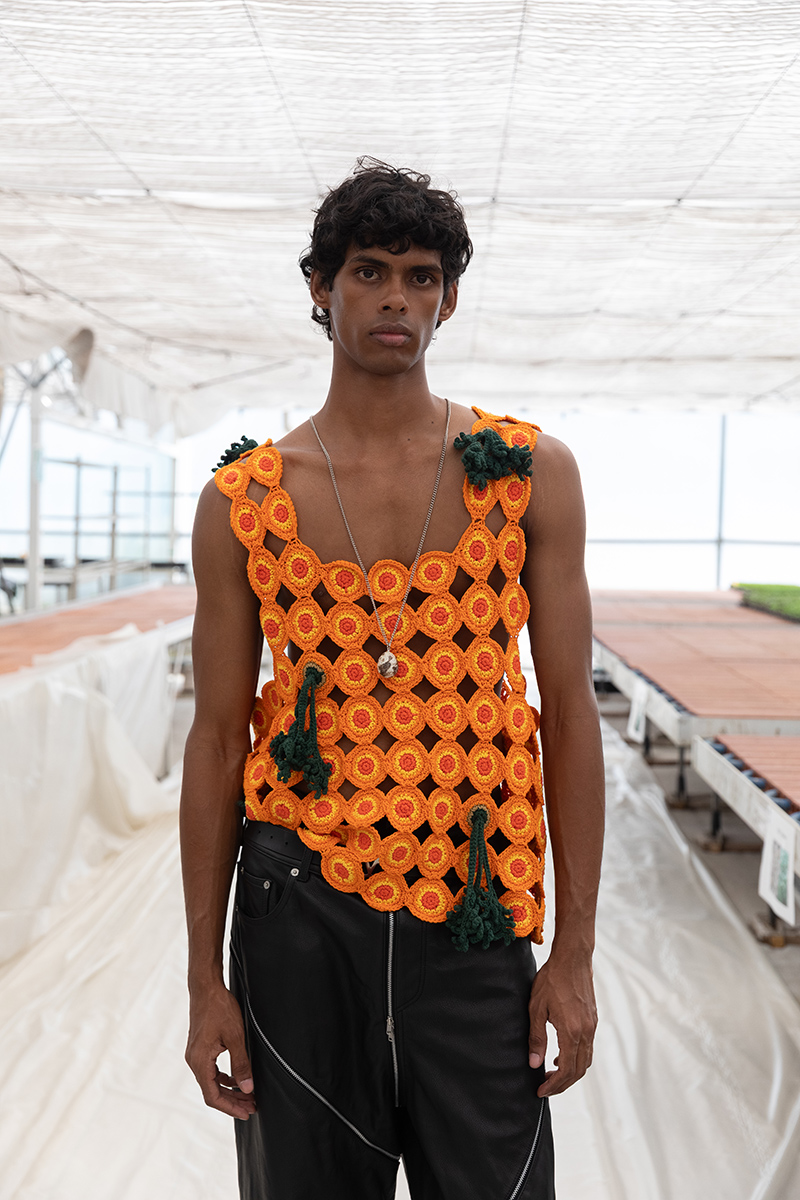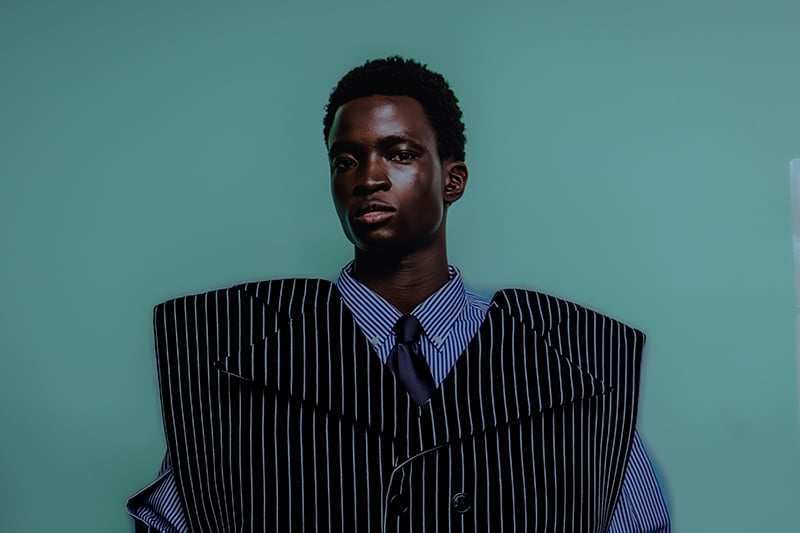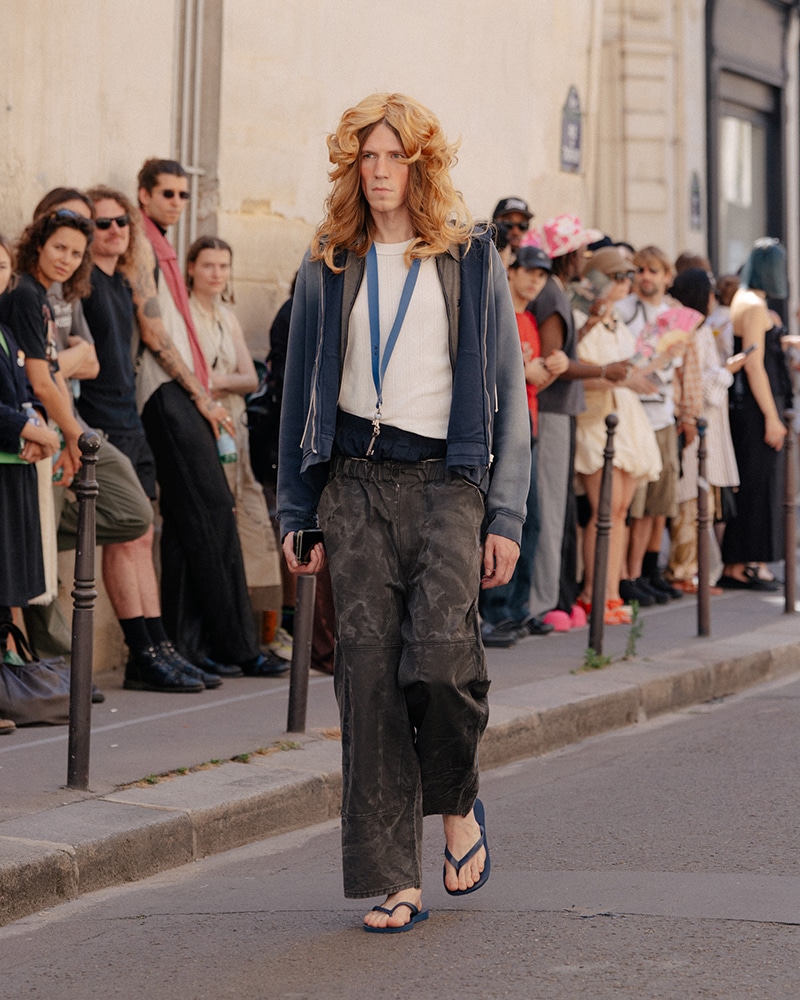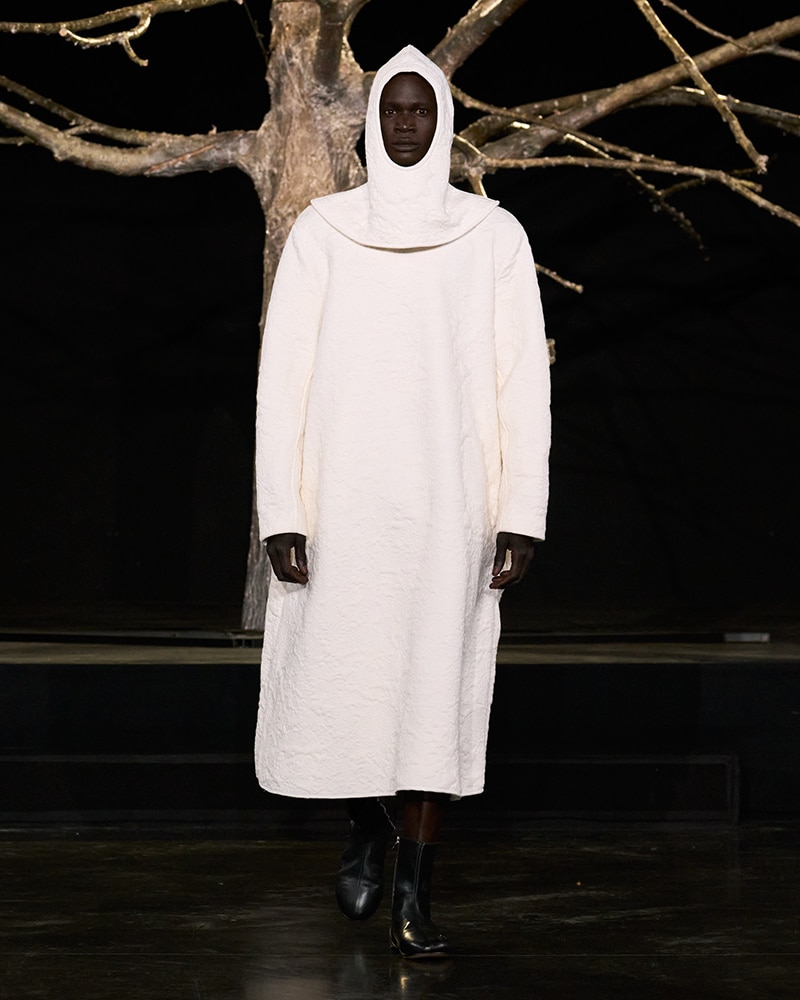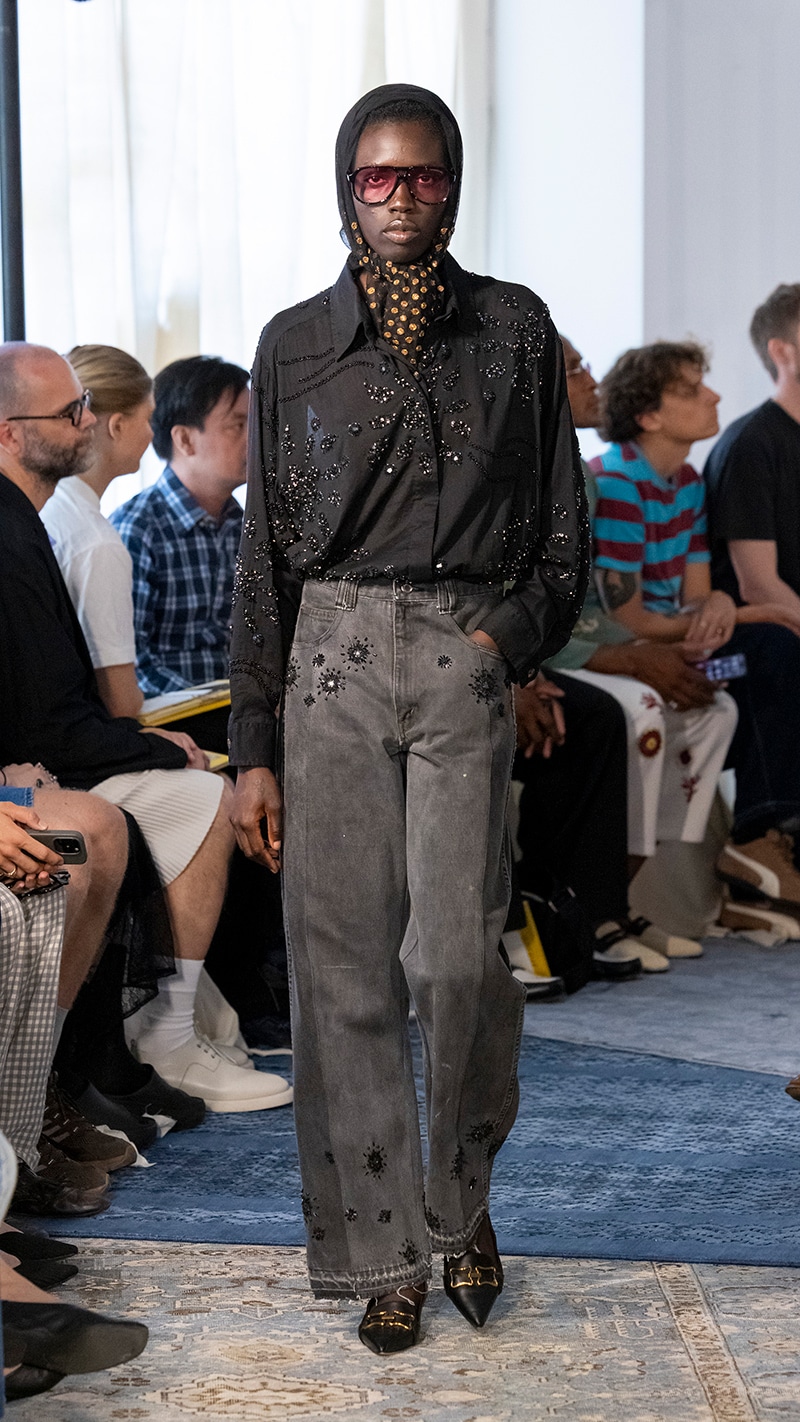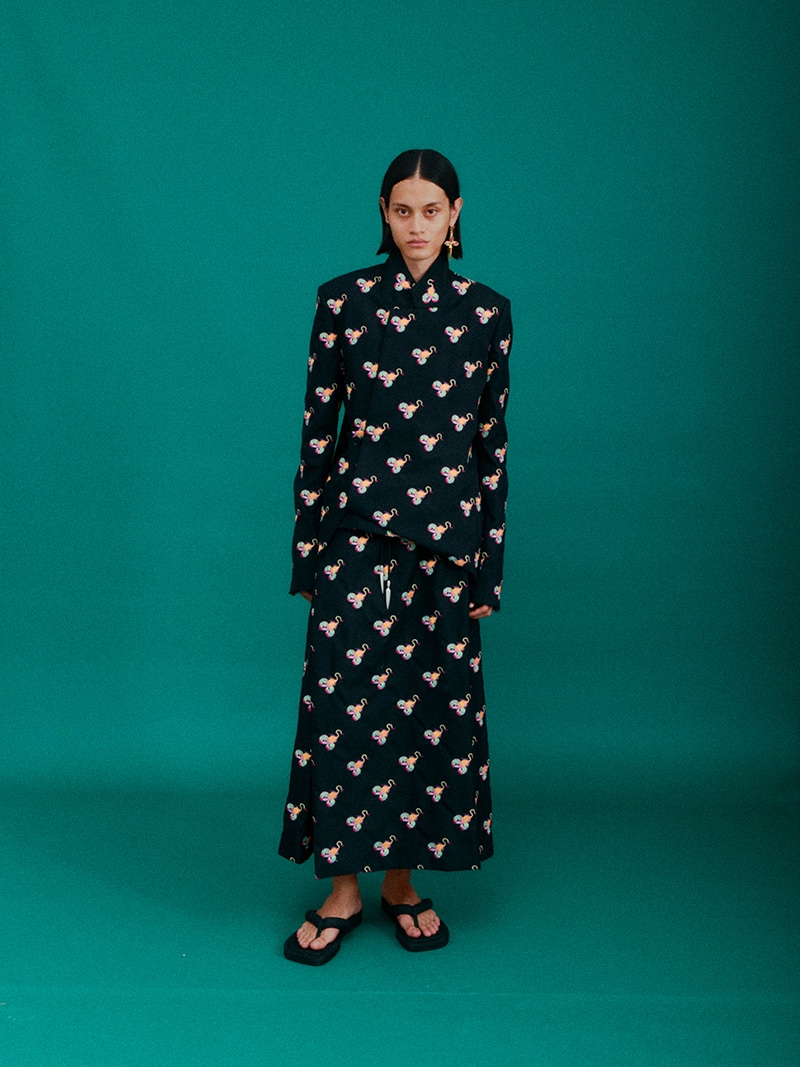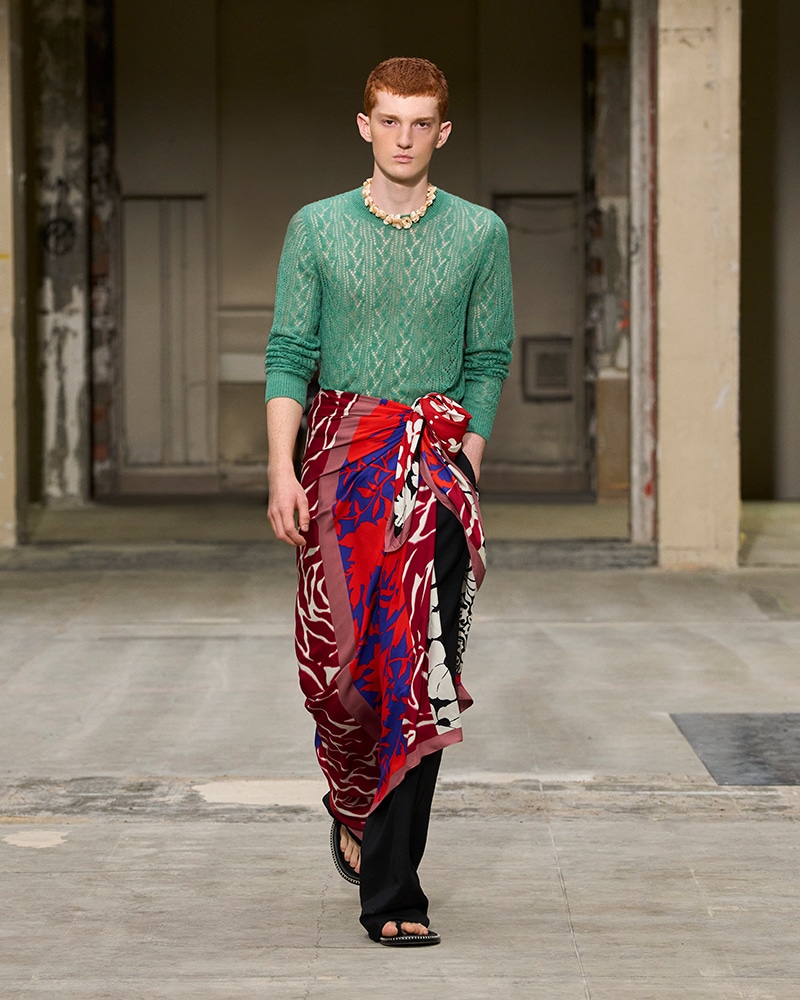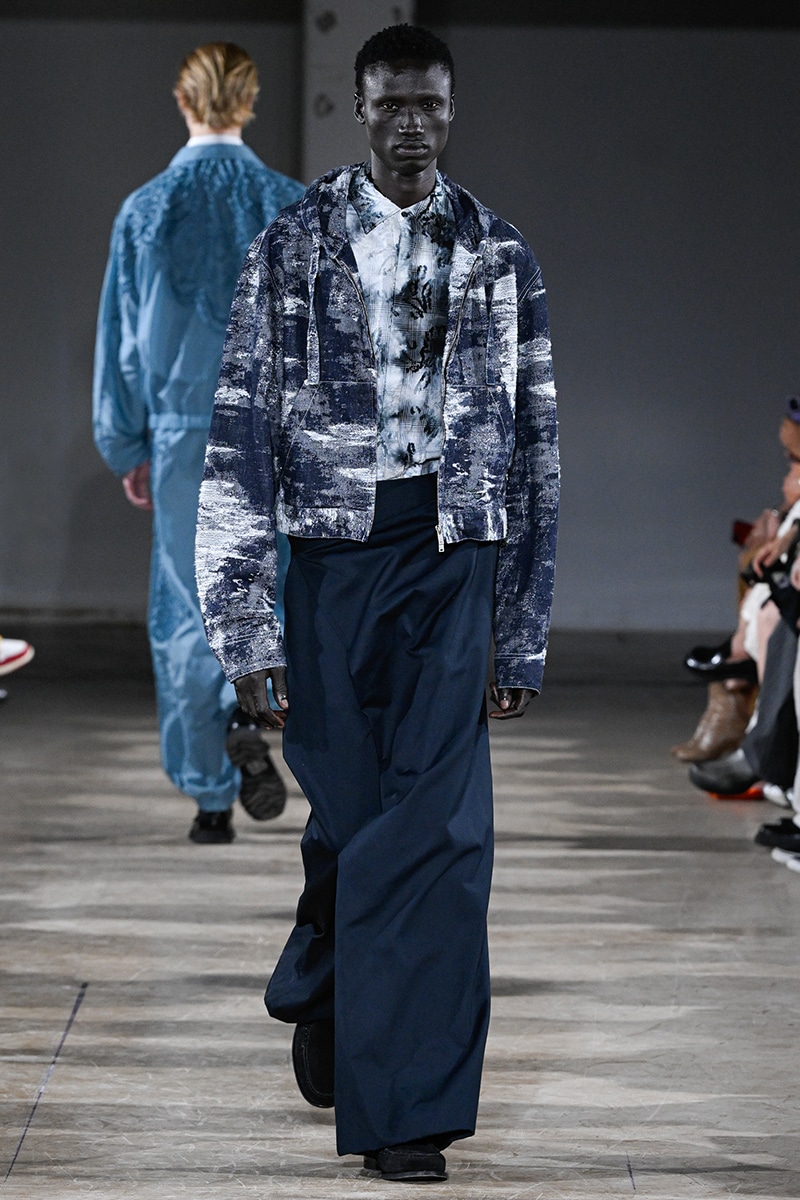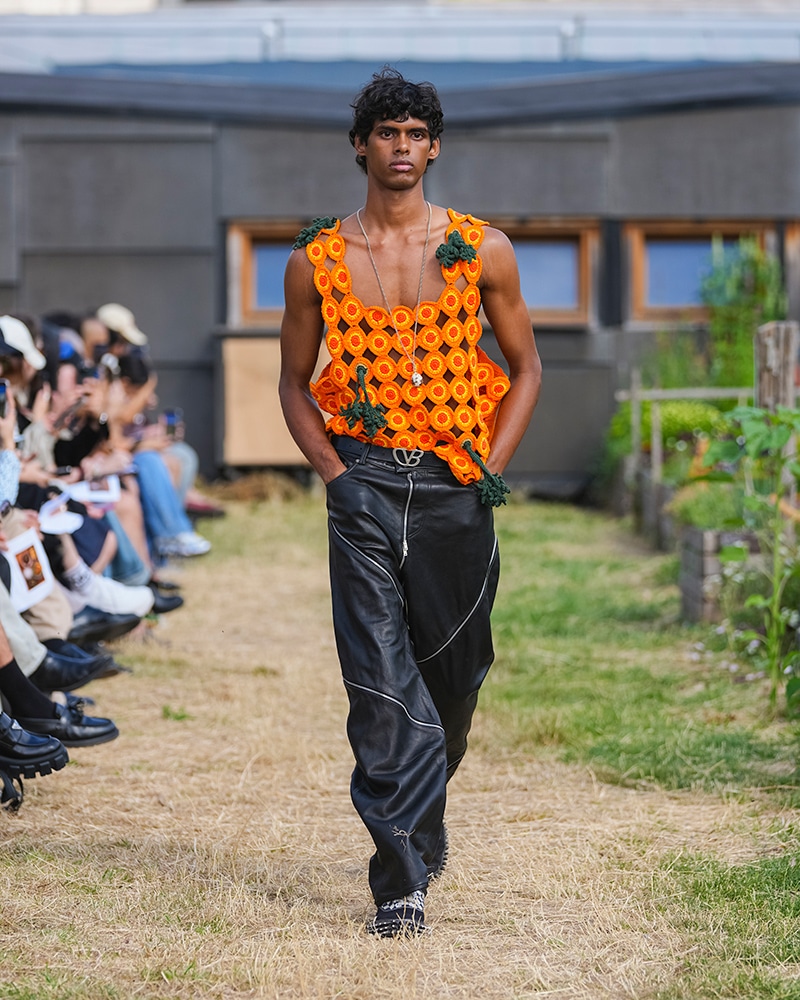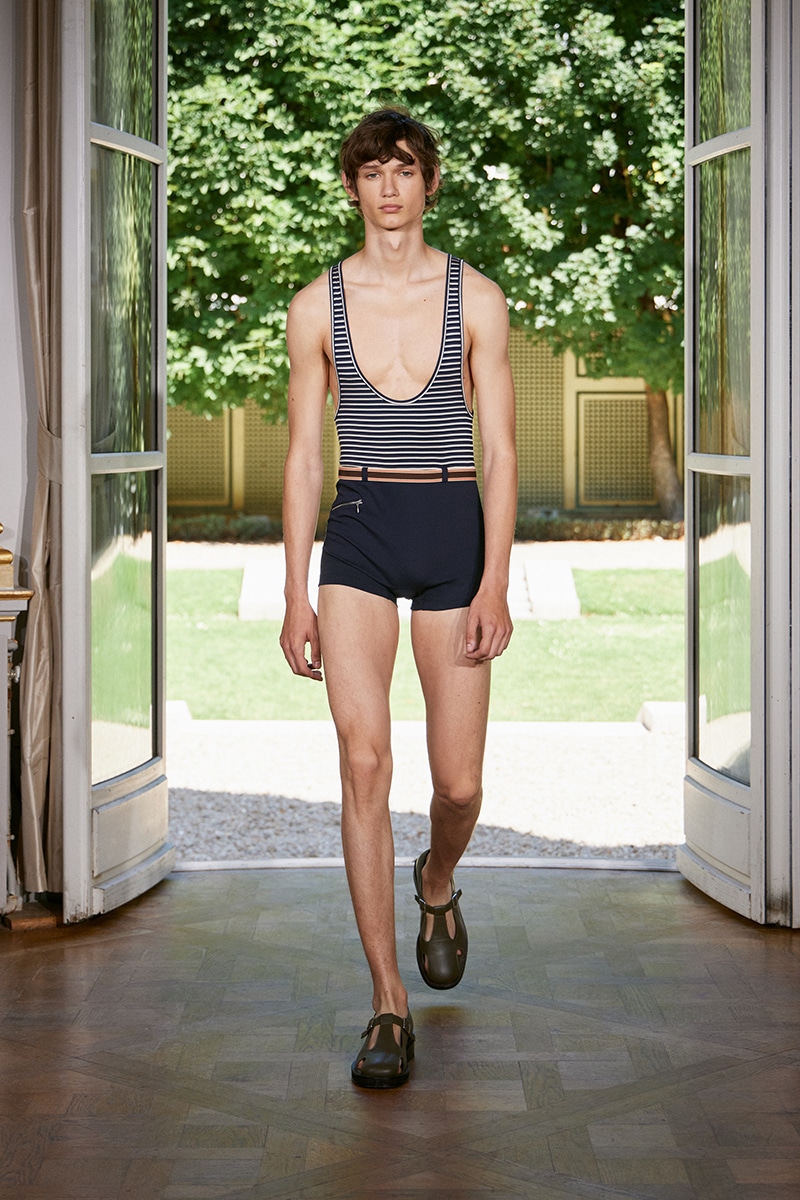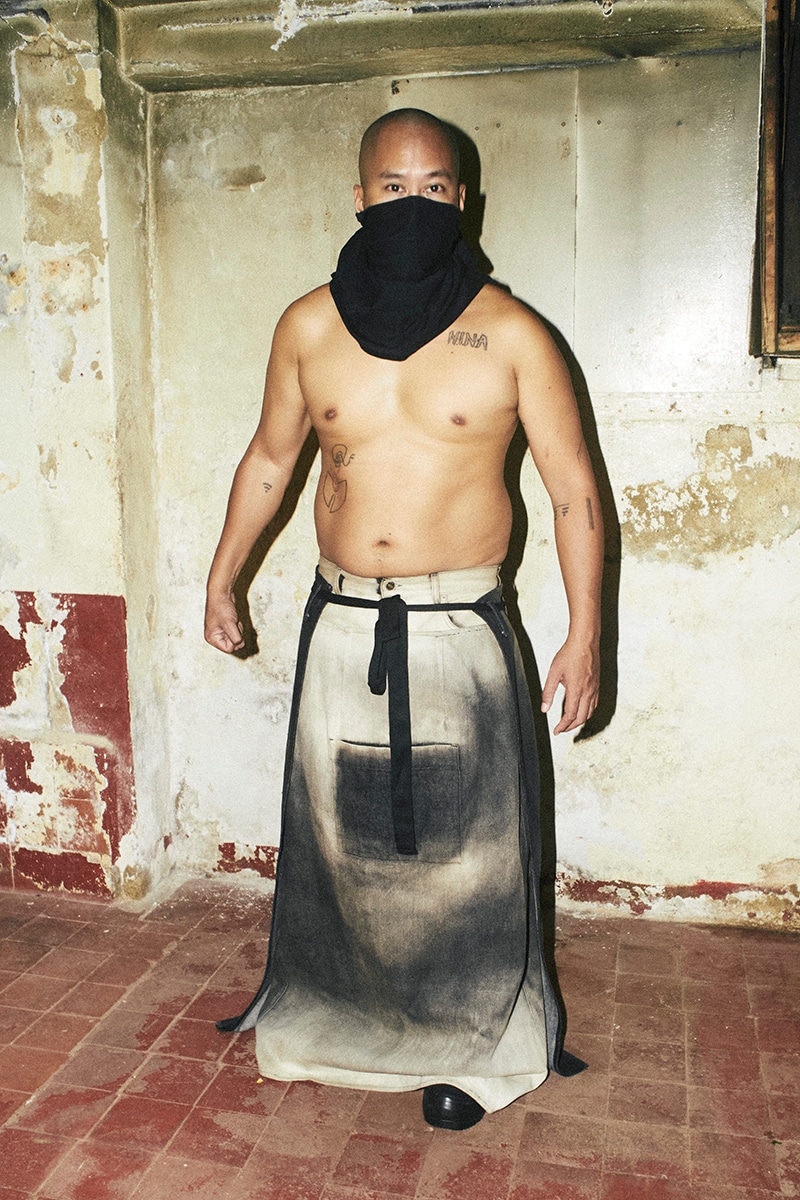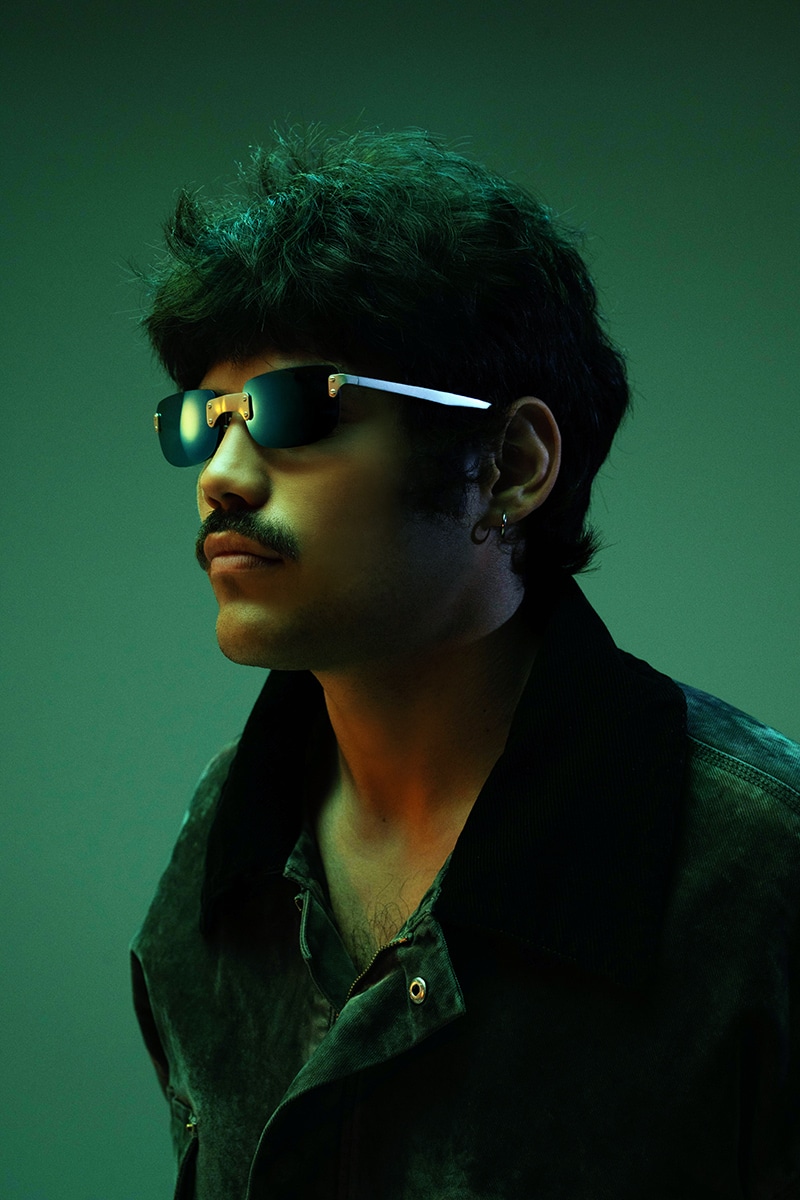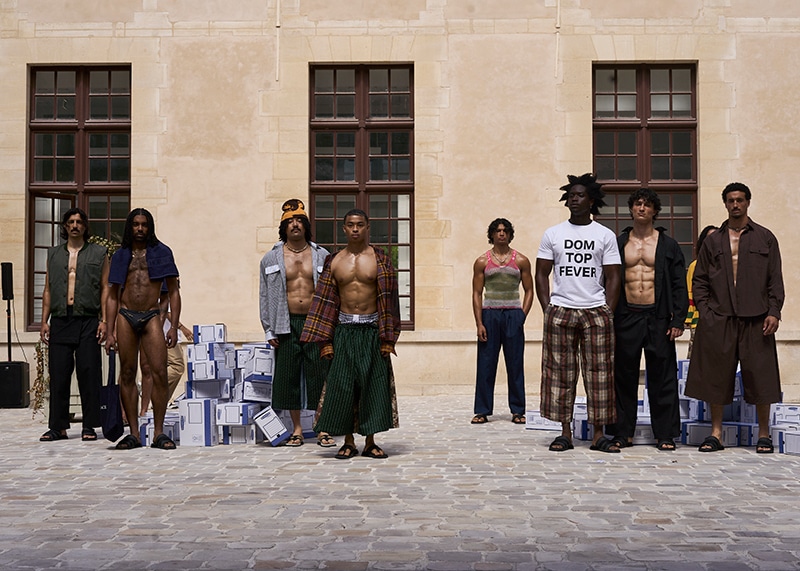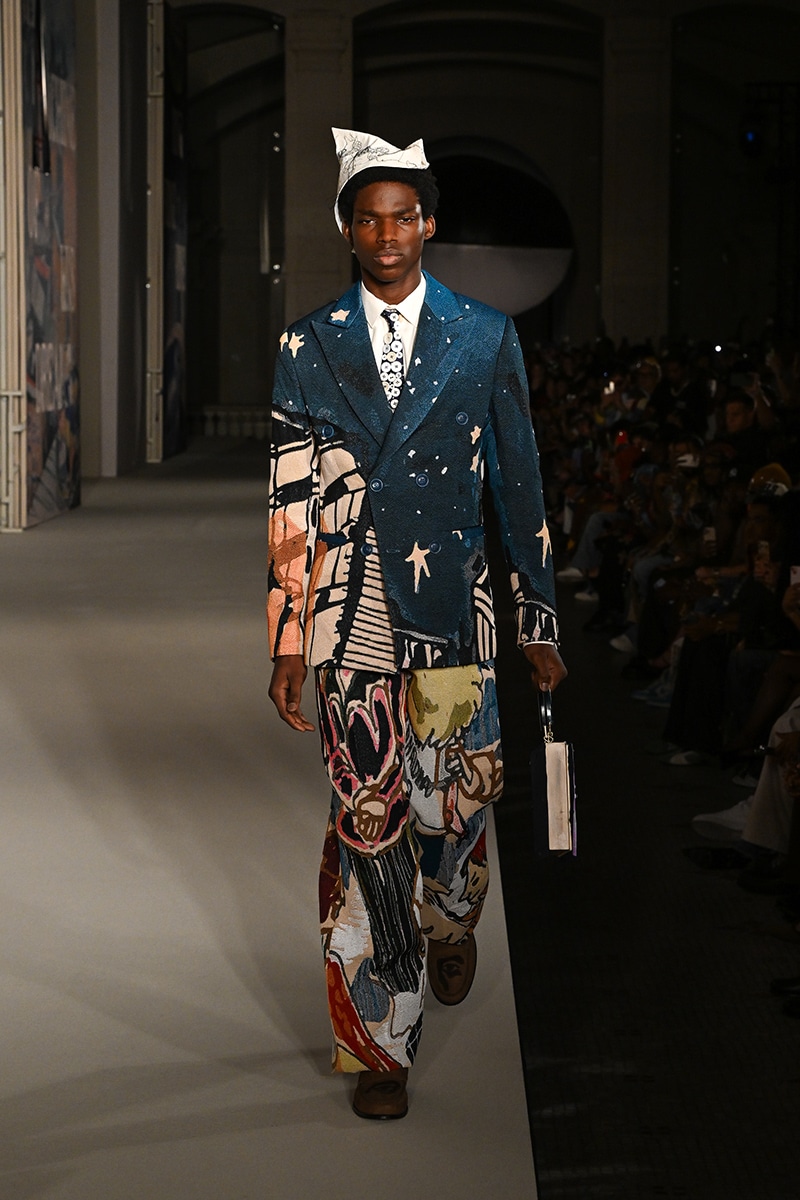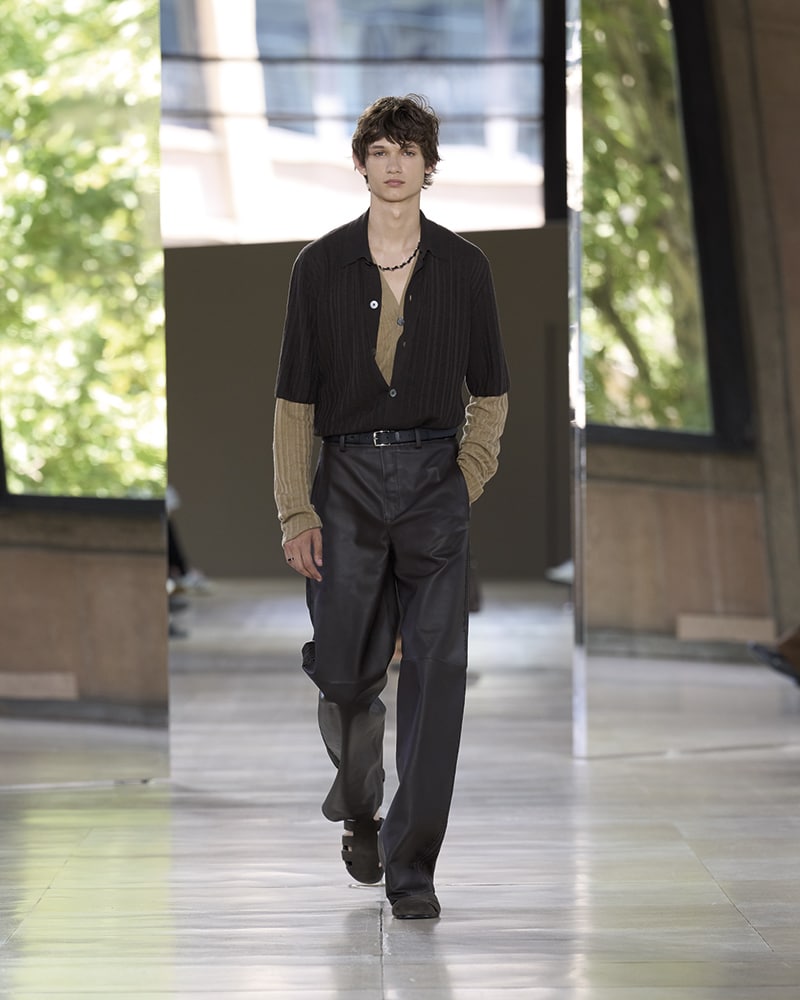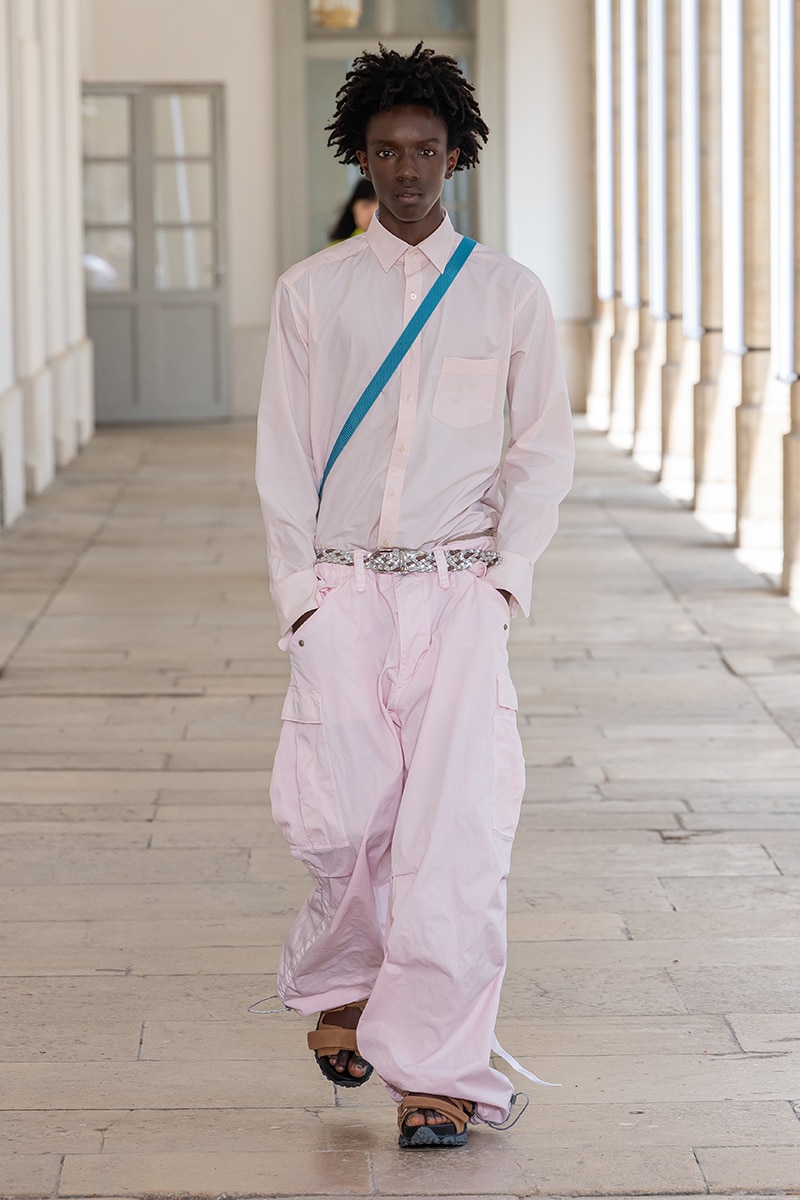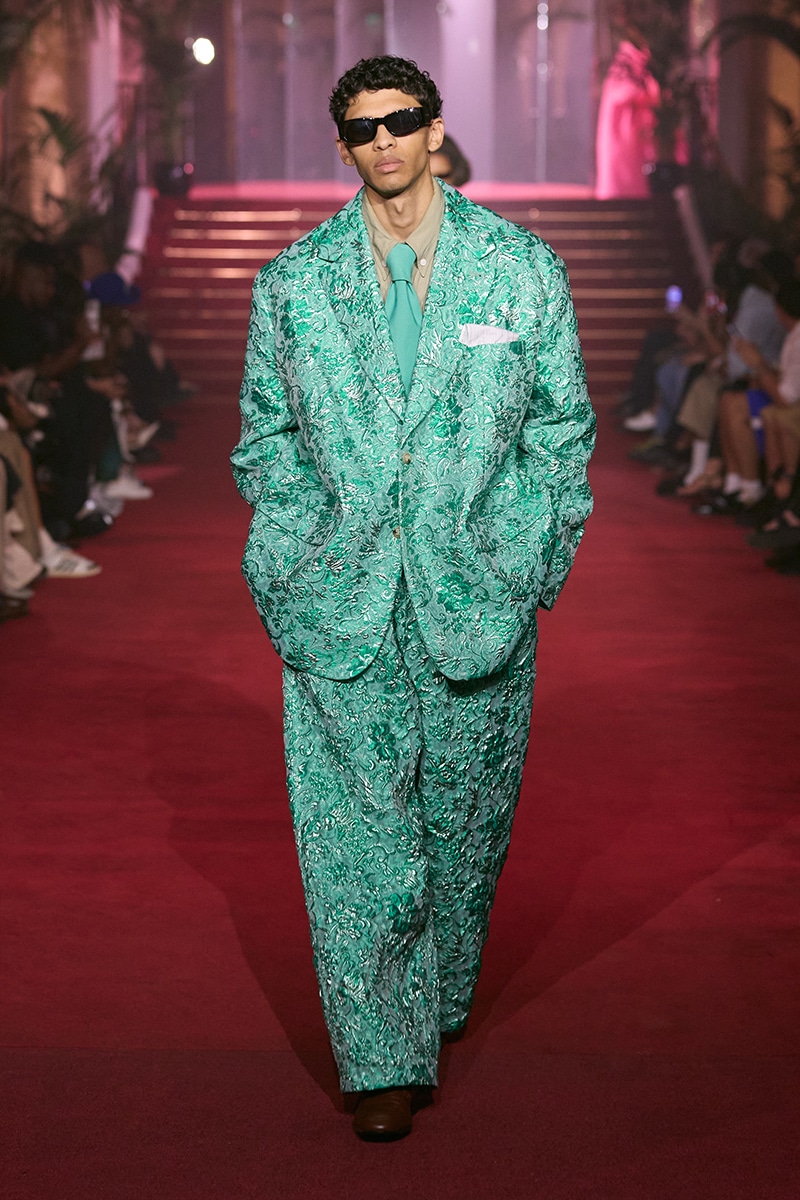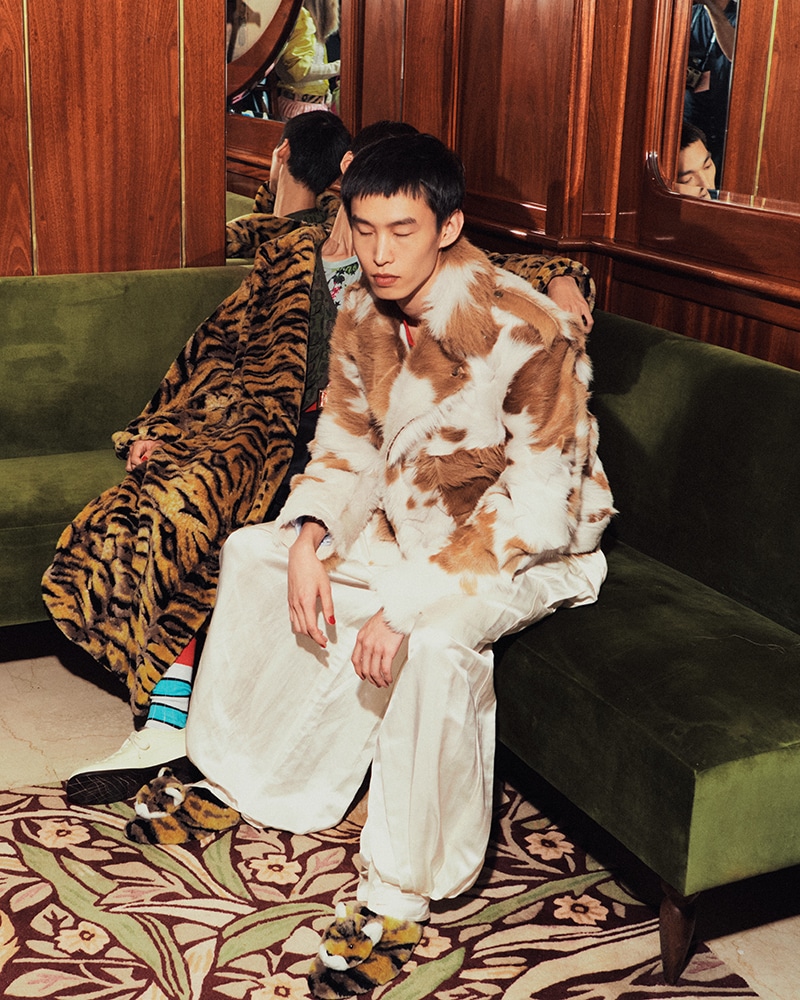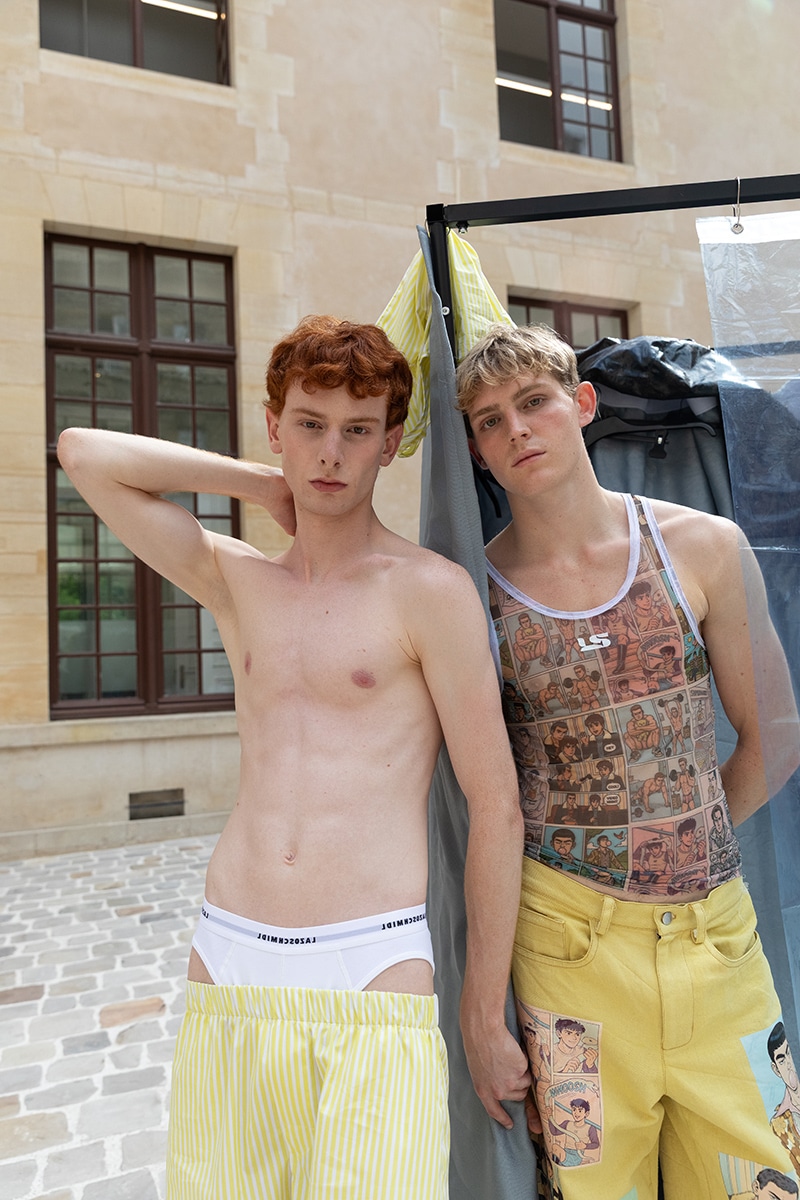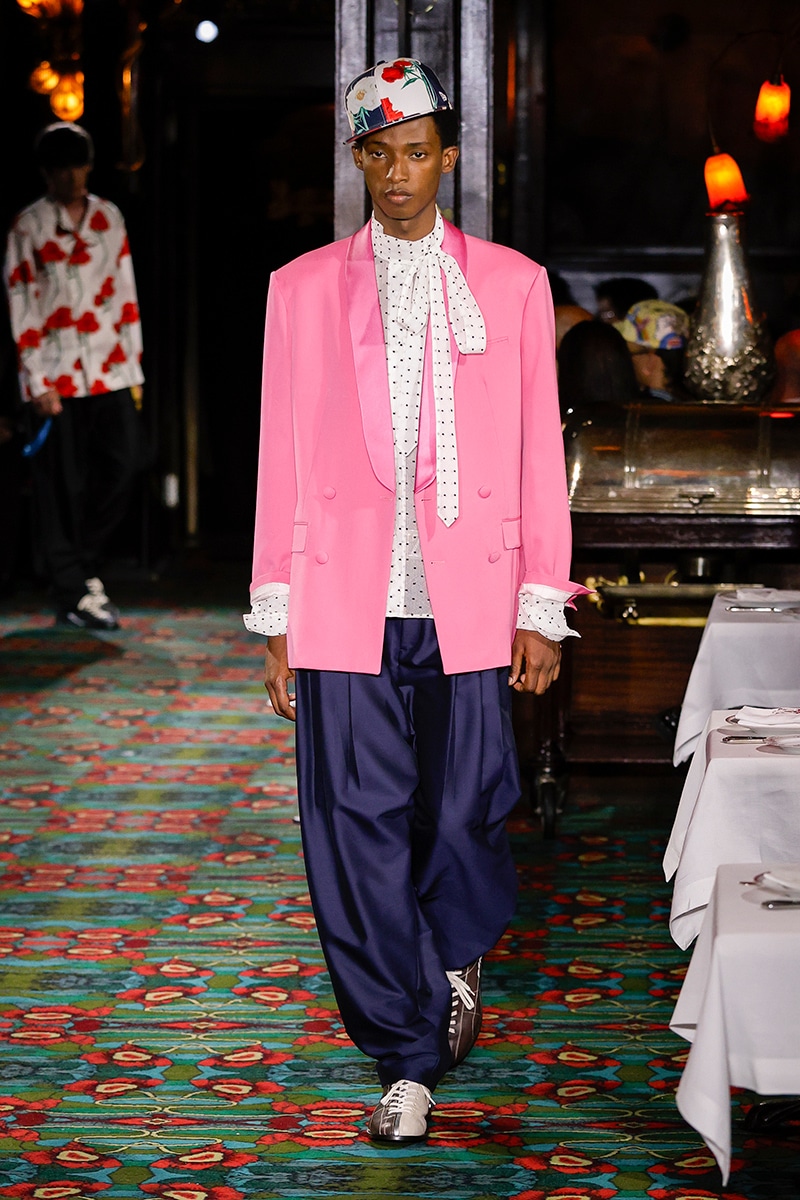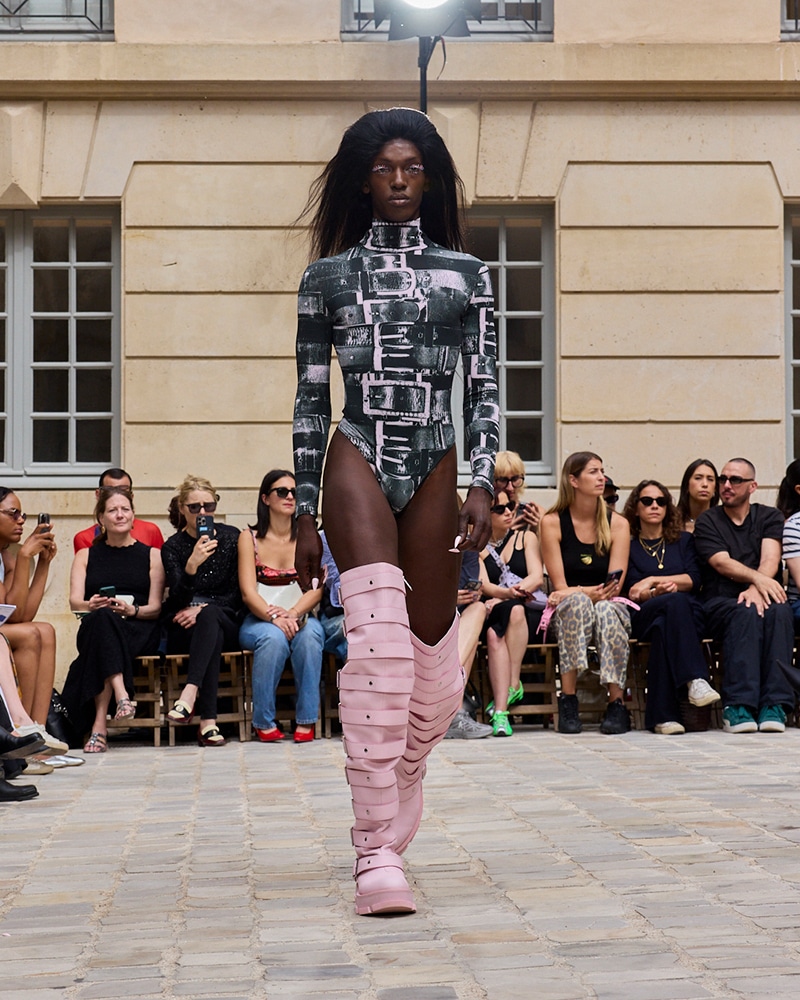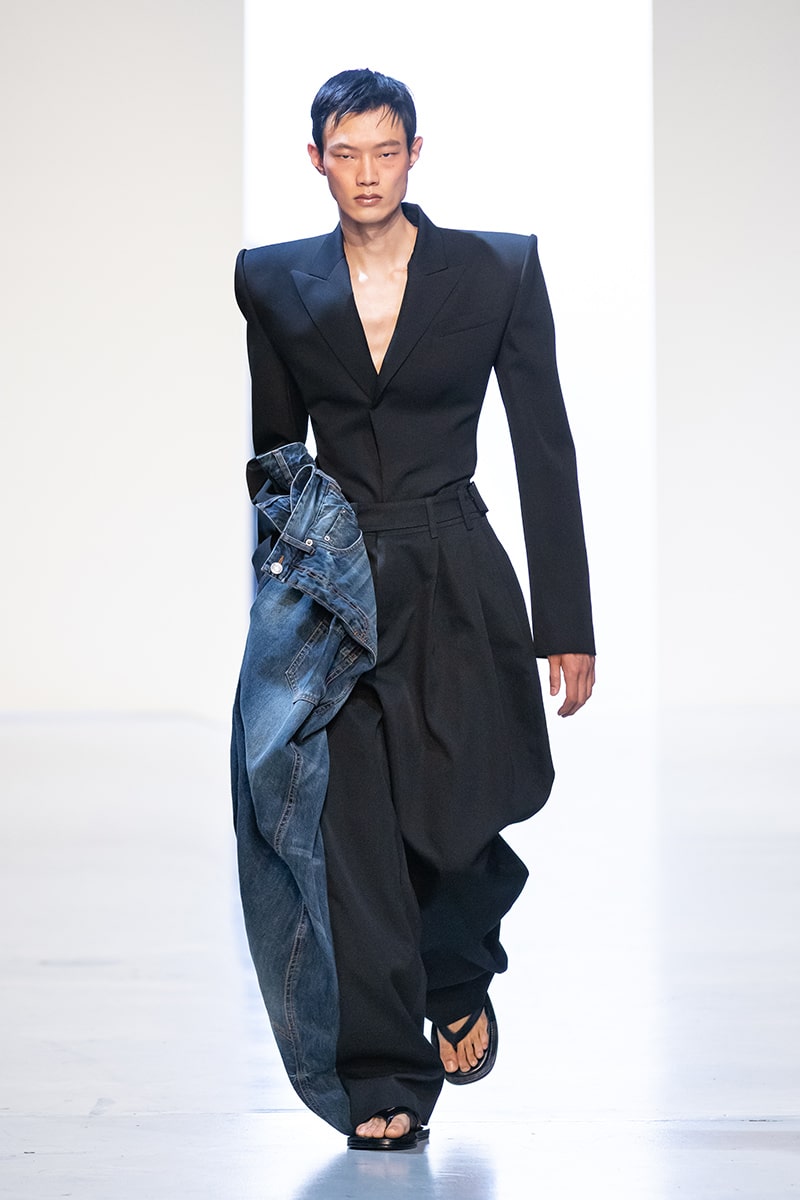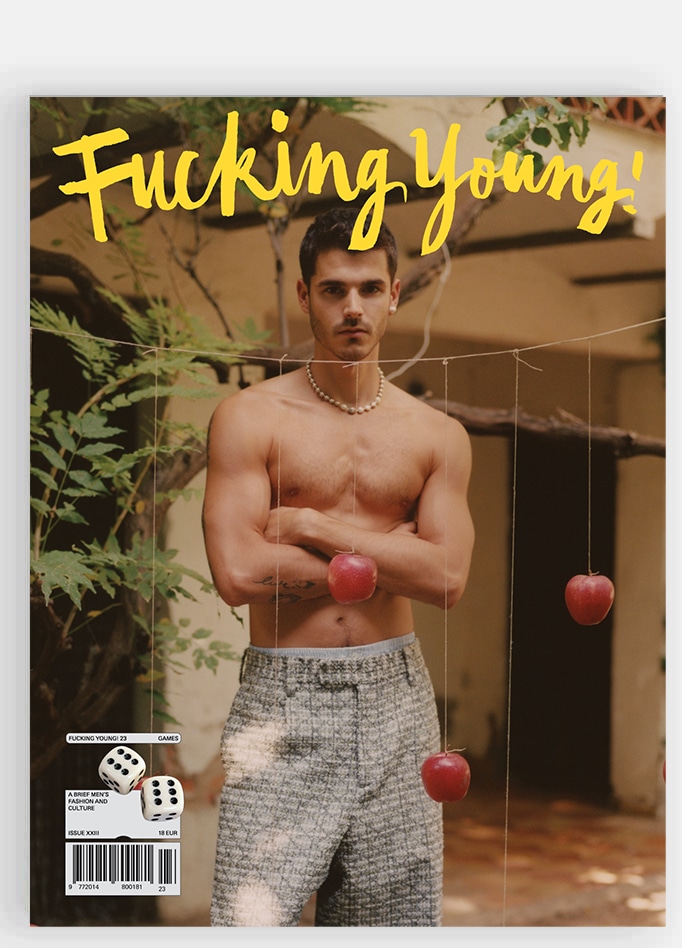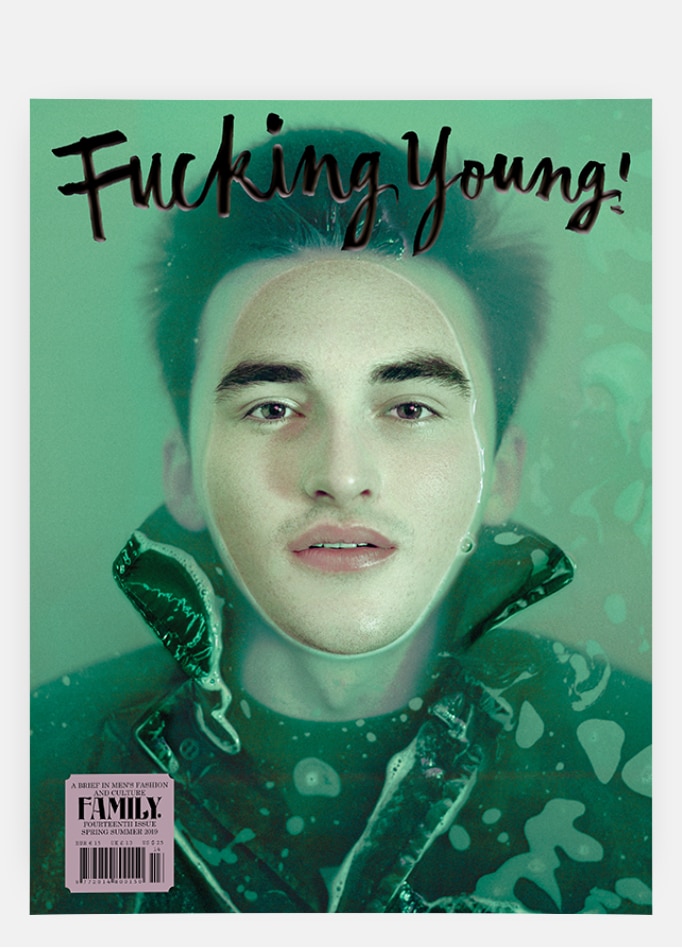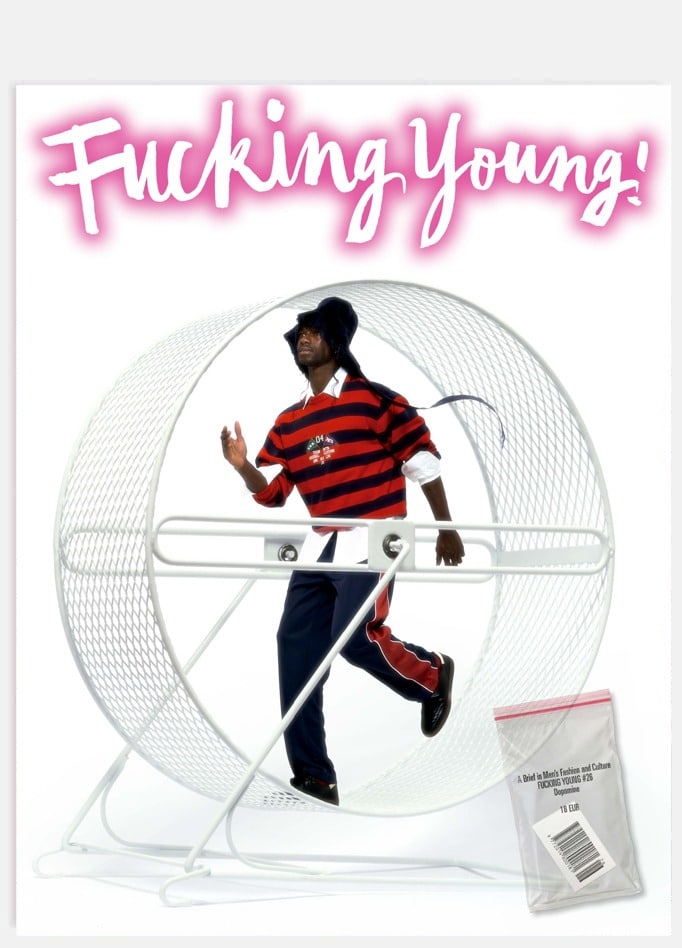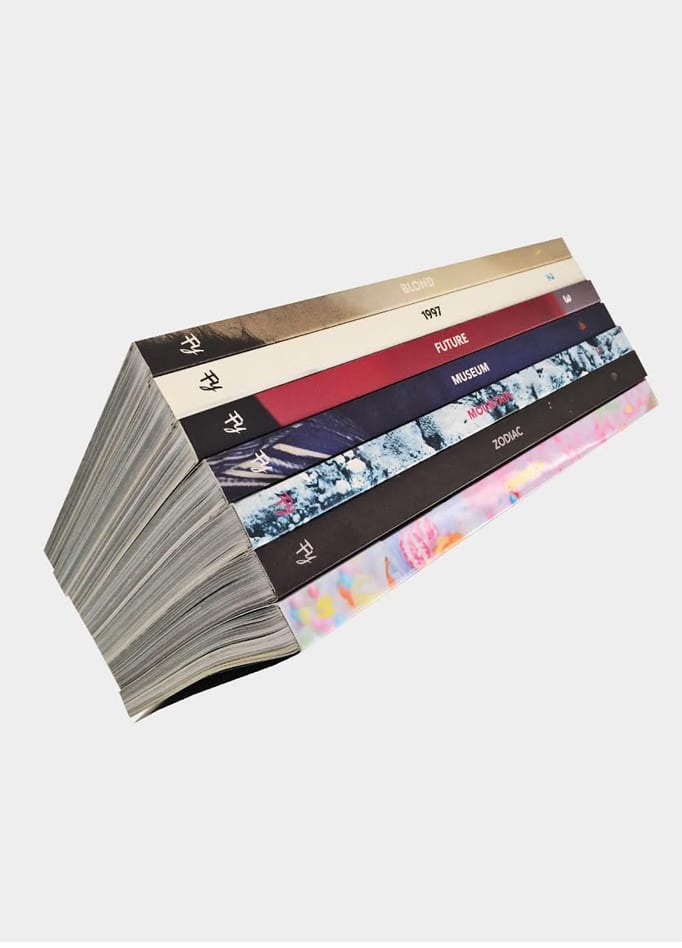The Sangue Novo contest was always about questions. How does the new generation of Designers interpret the world? Are they the solution for “tomorrow”?
For the development of their collections, the ten young designers from this new edition of ModaLisboa’s SANGUENOVE had the support of three big players in the Portuguese textile industry – Tintex Textiles, Calvelex/Fabrics4Fashion and Riopele, and they have been given mentoring from the panel of judges, since July 30.
We had the chance to speak with 4 designers presenting menswear and here’s what they told us:
Filipe Cerejo
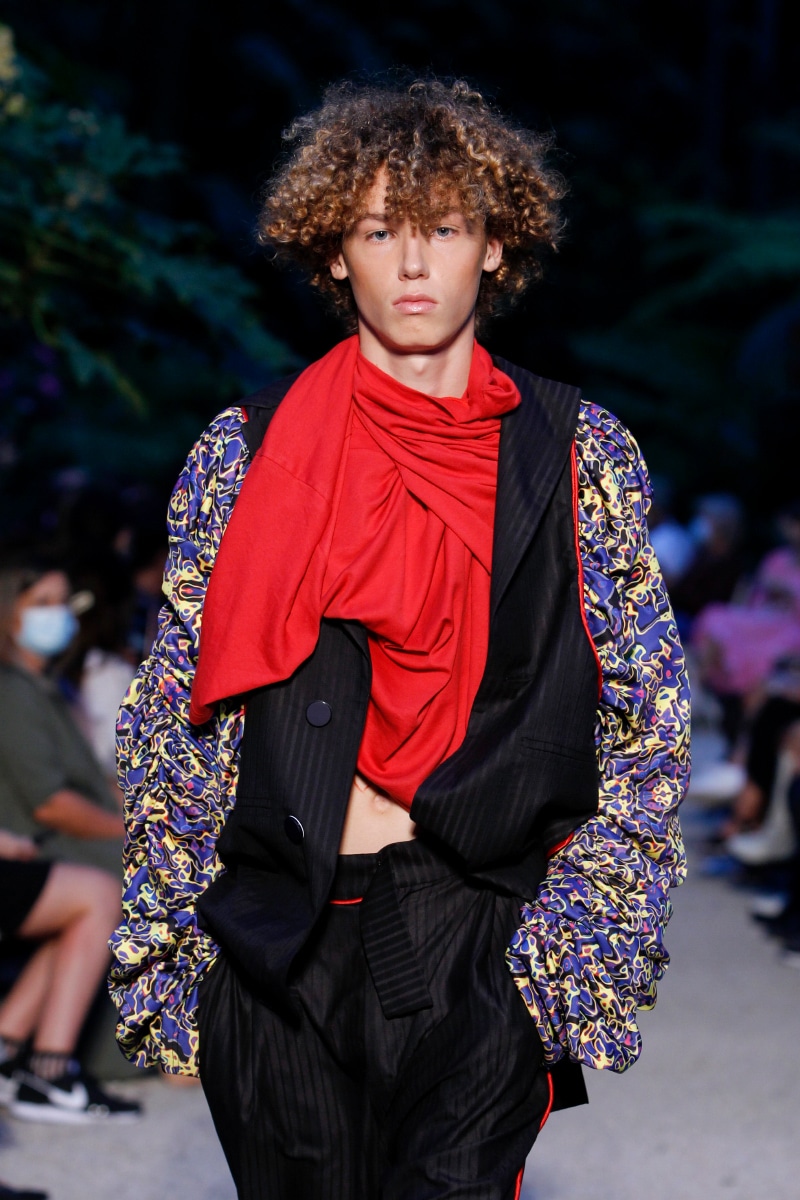
Tell us a little about yourself. Who are you, where do you come from?
I am Filipe Cerejo, a Portuguese menswear designer born and raised in Porto, based in London at the present.
What led you to present yourself to SANGUE NOVO?
My biggest goal is to show my work and myself to the people. As a recent graduate, I have now the possibility to show my skills and what I’ve learned in the past years through creating collections that I feel will challenge me and show to the industry that I am ready to fully take on serious business. And SangueNovo is an incredible platform to gain exposure since I also showcased my work here before while I was in my second year of university.

What is the concept of this collection that you present at ModaLisboa?
This collection is an outcome of an exploration of myself as a menswear designer pushing my creativity to the extreme and skills to the maximum, defeating the necessity of tools that I didn’t have since I developed this collection from home on lockdown on my tiny studio in London. The actual lack of resources made me see a perception for a design that I didn’t acquire before, exploring techniques of draping in a way to elevate the type of garment archetype. The result is an absolute reinvention of my way to design, bringing fundaments codes of my identity as bright and bold colors, innovative silhouettes. Unexpected, irreverent, and fresh!
What was your process for finding materials? Did you take into account the sustainability factor?
Finding materials was quite a challenge since I was doing this collection from lockdown and there’s was no way to see the fabrics, to touch them… it took quite a while to send emails to the companies in Portugal and Italy, get a reply, order samples, waiting a few weeks to get them delivered and figuring out that it’s not the weight/ type of fabrics we were looking for, starting all over again until we find the right thing! Fortunately, I kept in touch with a few companies in Portugal like Troficolor, a company specialized in Denim, whose all my sponsored up-cycling denim came from, and in that way I can say that I started to take steps into sustainability in a way to produce my garments. Tintex, Riopele and Calvelex as partners of Lisbon Fashion Week also gave us support with donations of fabrics in order to produce my collection.
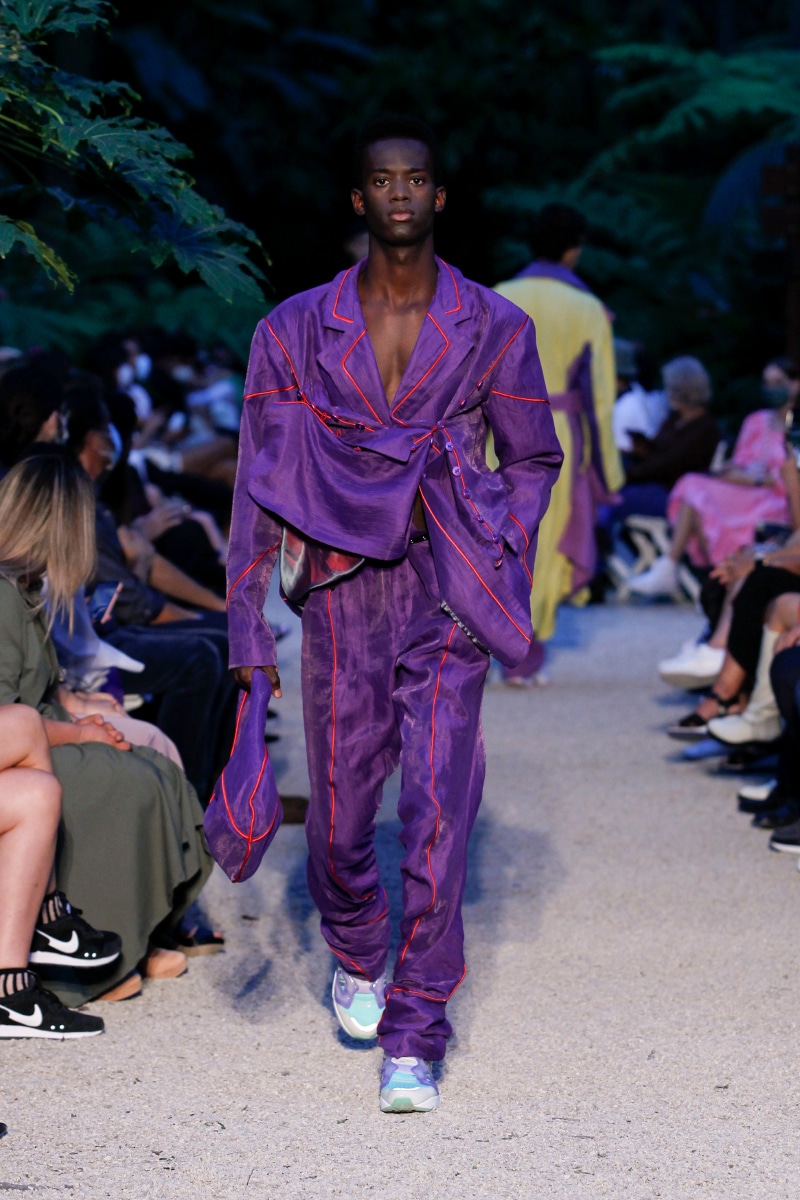
What do you think it takes (and it’s missing) for Portuguese brands to make the definitive jump to the international fashion market?
As a Portuguese designer based in London I had the best of both perspectives from the outside and from my own country and what I see is that we do have what it takes to succeed anywhere, we are incredibly hard workers and we find ways to do things even when the resources or materials are low. Portuguese Design means quality! I feel that we lack in terms of taking risks, the fear of something big ahead of us. My main goal when I decided to go abroad is because I wanted to be something bigger, noticeable! Show that Portuguese designers are also incredibly talented creatives, and staying in my country I felt that I couldn’t achieve the goals that I wanted, and once you are outside you see that everything happens so much faster, cause you can actually make things happen… I feel that Portuguese brands are still afraid to submerge themselves into the unknown, which might be worth it!
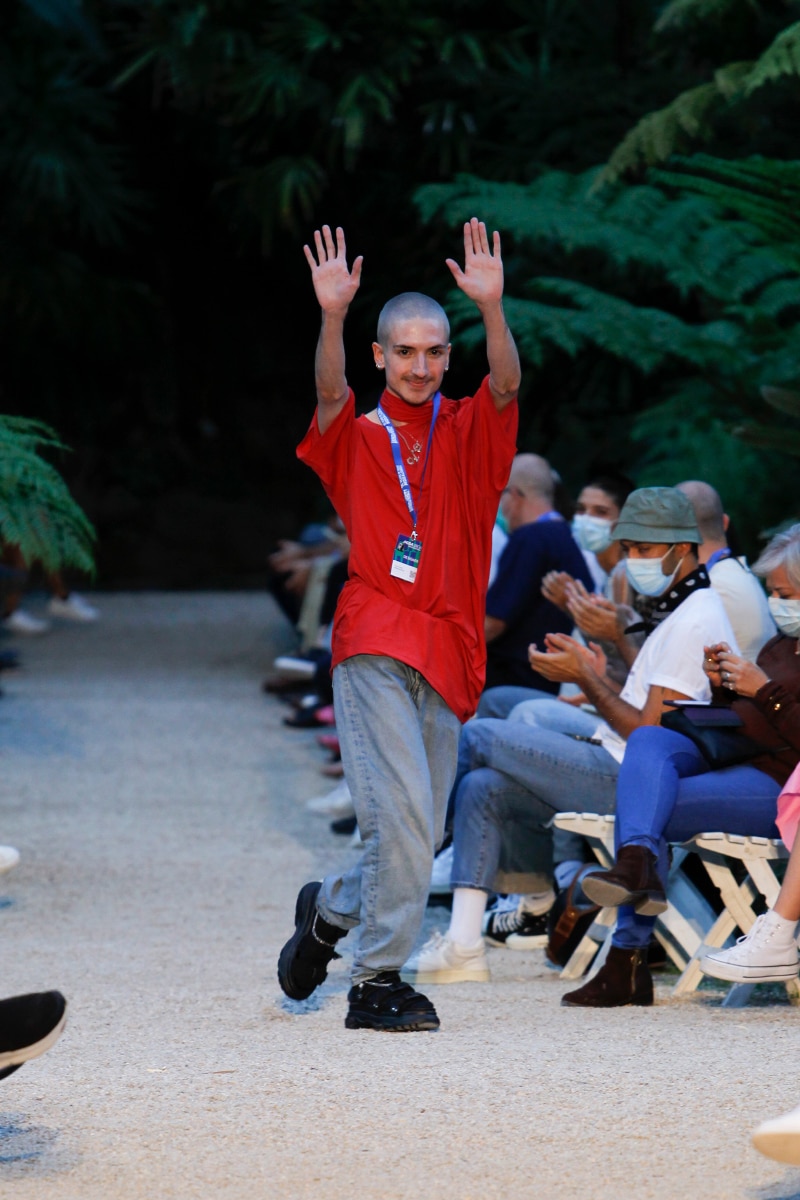
What’s next for you?
I graduated a few months ago and I thought I’d get lost without a perception of what I’d actually could do to move forward but it was the opposite, things are happening so naturally that I barely have time to rest, always keeping my mind busy with something else to do. I feel that the future holds exciting new things coming ahead and I cannot wait to get my hands dirty on them! I want to keep working on my brand, my aesthetic, pushing myself every day to find new ways to design, collaborate with different creatives, work for some top industry brands to get to know the business better. Live a day at a time and the most important, do not rush my creative process, I do believe that whatever goals in life we want to achieve, if we really work hard for it, it will happen somehow, sometimes when we less expect and not the way we visualize.
Maria Clara
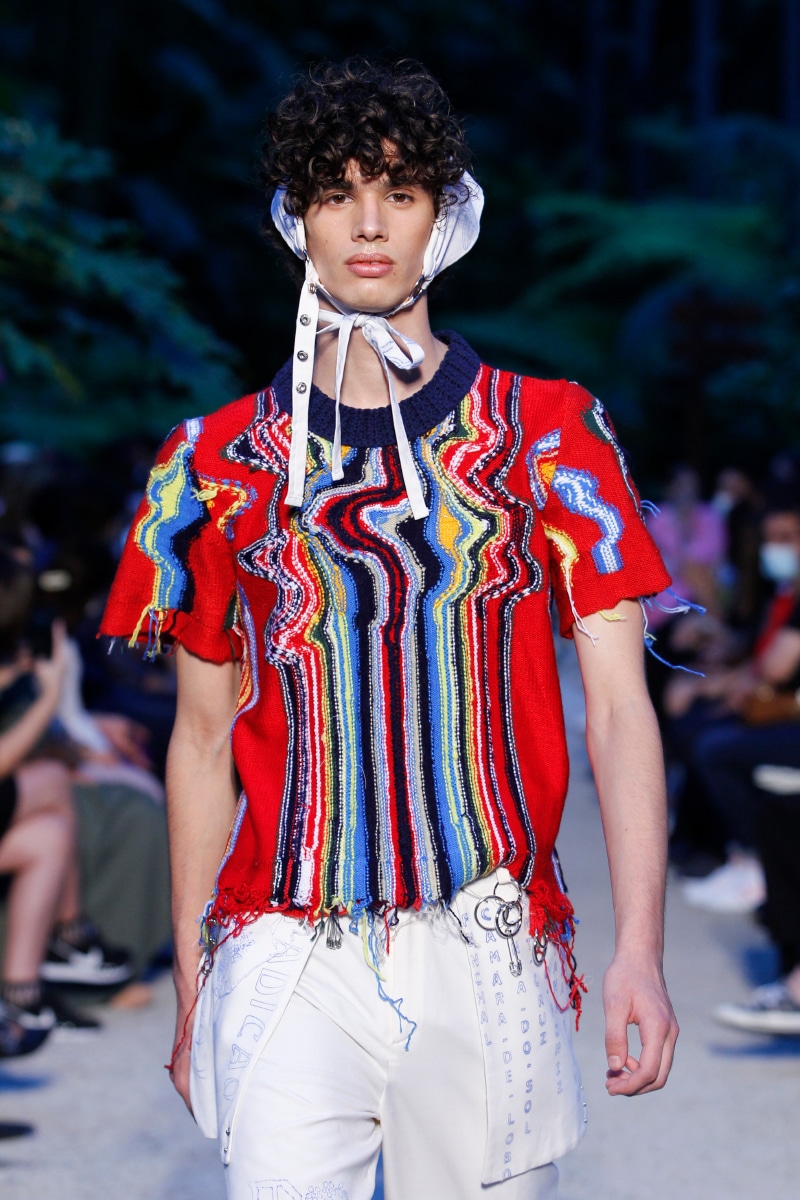
Tell us a little about yourself. Who are you, where do you come from?
I was born in Madeira, a little island in the middle of the Atlantic sea.
I’m a young fashion designer, graduated from Faculdade de Arquitectura da Universidade de Lisboa. In my last year of college, I studied abroad in Italy, and soon after concluding my BA, I moved to London to participate in a machine knitting short course at Central Saint Martins. Throughout this last year, I’ve been in my hometown promoting and organizing, among other 5 young artists, a solidarity project called “criar com tradição”, aiming to preserve, but at the same time innovate, the traditional craftsmanship from Madeira Island and its cultural heritage.
What led you to present yourself to SANGUE NOVO?
When I was in college, my teachers would always talk about Sangue Novo, encouraging us to participate, even If just as an exercise to practice our creative and design skills. Somehow, I found my way to it 2 years after graduating. I guess, since those first years in FAUL, the idea of being part of it and presenting my work among other talented young designers at Sangue Novo has always been on my mind.
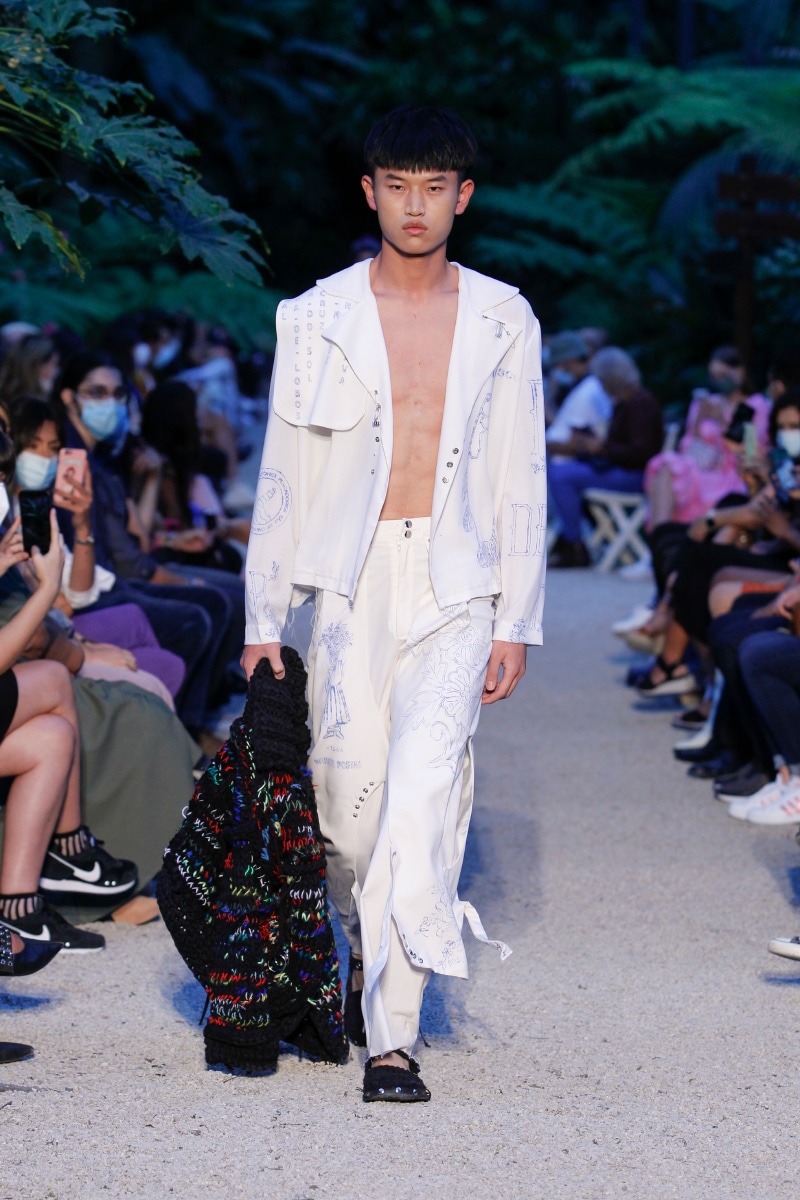
What is the concept of this collection that you present at ModaLisboa?
My background and where I am from are very important in everything I do every day, and since I’ve started this project on tradition and craftsmanship, I have also found the terrible conditions the artisans used to, and maybe still, live in. By that, IDIOSSINCRASIAS is an open heartfelt recognition of all the workers that pass anonymously through the eyes of society, most specifically, two important minorities intrinsic to Madeira Island, the fishermen and the embroideresses. One and the other responsible for some of the most profitable markets of the archipelago, Fishing and Madeira Embroidery. The little typical boats, from the fishing village of Câmara de Lobos, give the knitwear their warm and vibrant colors and the printed indigo on the fabric tells the story of arduous working days. This project is an ennoblement to the workers who, humbly and innocently, gave name and color to the idiosyncrasies of my land.

I especially like the balance between the masculine and the feminine in your collection. How important is that for you as a designer?
I have always loved the romantic and feminine design, elaborated and full of details. But at the same time, and for a while now, I’ve been feeling more and more attracted to the simplest designs, clean cuts, and to a “masculine silhouette”, focusing mainly on the textile. I like to play with both of them, mix contrasting shapes, put no labels on it and create something to be appreciated and worn by whoever feels its best in it.
What was your process for finding materials? Did you take into account the sustainability factor?
My very first step, before creating shapes and designs, was to focus on the base of the garment, the textiles. I’ve produced all of my knitwear combining different techniques and materials; and manipulated the fabric through a printing process used on some early steps in Madeira embroidery. From using recycled yarns from past projects to a minimal waist printing method, my fabrics have gone under intense and diverse handwork, always accounting the sustainability factor.
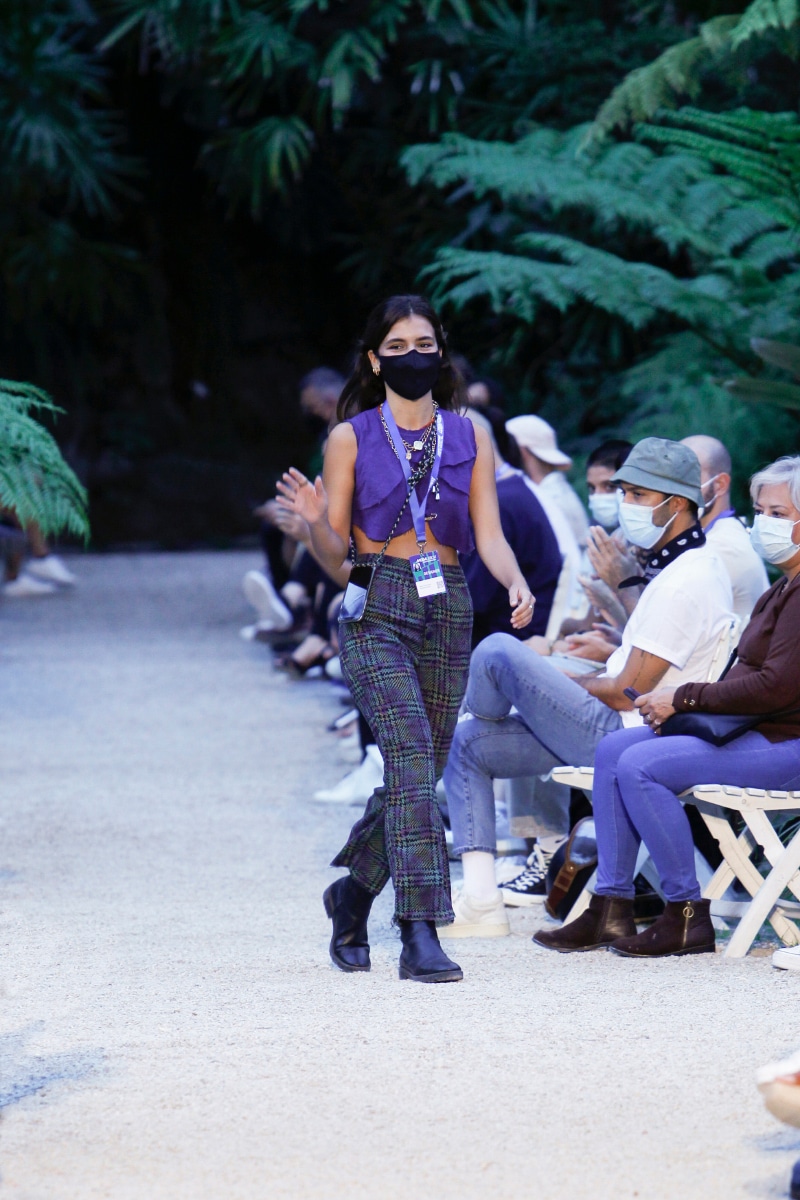
What do you think it takes (and it’s missing) for Portuguese brands to make the definitive jump to the international fashion market?
We are a very conservative country, but I think we have been watching a progressive change. The major cities are becoming much more dynamic, growing internationally, and that, consequently, reflects on the fashion field. From streetwear to art students, to fashion designers, people are becoming braver and true to themselves and their beliefs. We can see a lot of young fashion designers making a difference, innovating on materials and designs, breaking patterns. We still need more, though. We have to lose the fear of seeing fashion as art, stop thinking about what the community might think, and play for ourselves.
What’s next for you?
I hope there’s a master or a post-graduation in textile design/fashion design, I’m not satisfied yet. I’d like to learn more, explore and try new techniques. I don’t feel complete just yet, there’s a lot to discover, not only from the world but from me.
Reimão
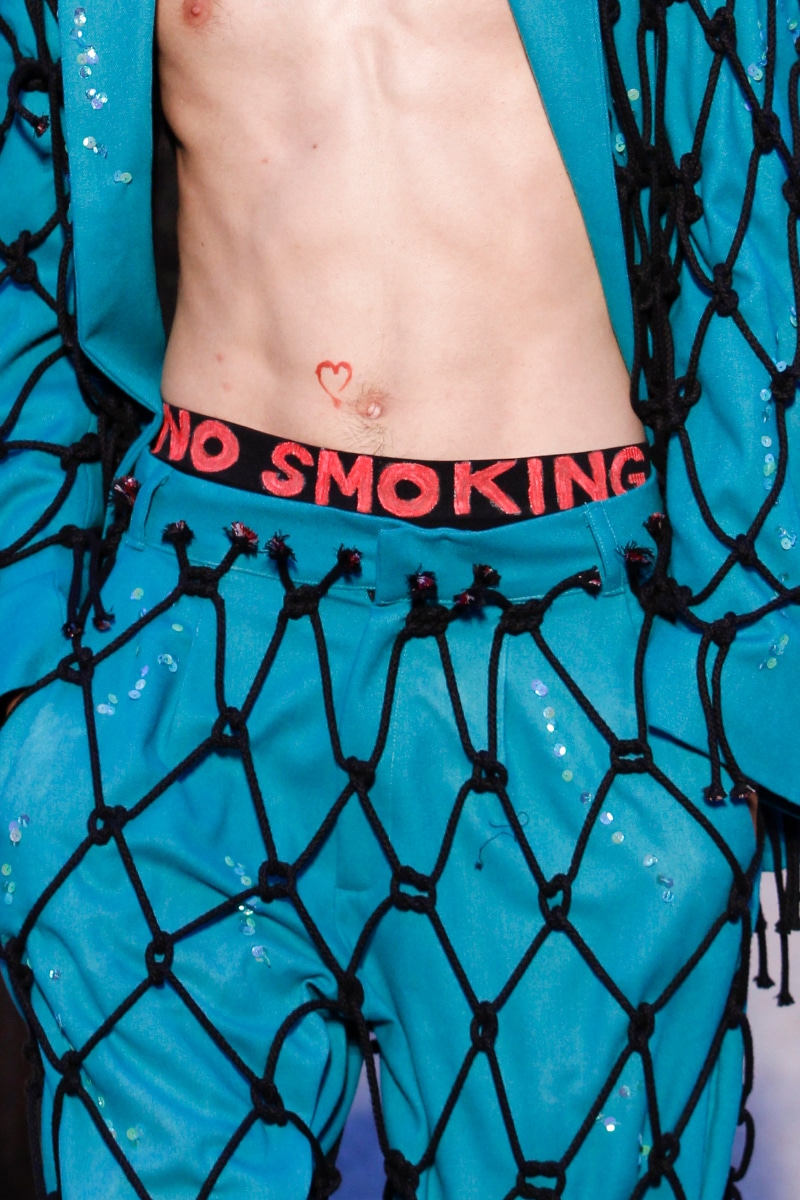
Tell us a little about yourself. Who are you, where do you come from?
I ‘m Andreia Reimão or just Reimão. I’m 22 years old, from a small town close to Marco de Canaveses (Portugal) but I grew up in Switzerland, which had a lot of influence on me. At the moment, I’m in the last year of my fashion designer bachelor’s in Porto. I have always dreamt about creating my own universe since a very young and I wanted to do it through fashion. Last year Reimão was born and it’s a reflection of what I am as a creative person and what I want to tell the world. Reimão is my utopia.
What led you to present yourself to SANGUE NOVO?
It all started last year, during the lockdown, when I wasn’t feeling creative enough with the classes that I had and I really needed to explore something new, far from the traditional classes and I did it by myself. So, I decided to apply to Sangue Novo with a collection that I drew in that lockdown and I was selected. I was extremely happy because it was the first time I showed my work to a lot of people. I grew a lot with Sangue Novo last year, because I knew what I wanted to do but it’s different when you start doing it. I reached the final but I wasn’t expecting to win, because the other contestants were older and had more experience than me. So, I decided to apply again in this new edition, with a collection that represents me better than the others and to continue the storyline that I created for Reimão.

What is the concept of this collection that you present at ModaLisboa?
Firstly, I always have a universe and some references that are present in my projects. One of them is questioning aspects of male behavior. And this collection is still on this path, but I simply changed my main reference. In this one, I was extremely influenced by the work of Alexandra Leese, “Boys of Hong Kong”. Pretty much everything was inspired by those images. This is a very small collection so I only selected some men/images of the project and explored from those. Then, everything started with my sketchbook and I tried to explore new silhouettes, colors, fabrics, and more details than the previous collections. I created a storyline with several parts and this is the third collection of the first part. This idea of the storyline can be easily understood by the names of the collection, “Beautiful Guy, Love me to Eternity and don’t smoke around me…”. That’s why I’m still exploring what masculinity is. I feel it’s too complex to only explore it in one small collection.
What’s your definition of “masculine”?
I haven’t found it yet, sometimes I think it is a word that just doesn’t make sense anymore. I always wanted to show a more delicate and real side of people, what makes us human, what makes us love. Maybe that is my definition of “masculine”, to be human, to be loved and love, to be sincere, and not to follow what society says a man should be. I call myself a menswear designer, but in reality, I don’t like that binary term, I just create clothes for people and I believe I use the term menswear as a protest against some inequalities and injustices. To be masculine, it’s not about being a man, woman, or non-binary, it’s about being human.
What was your process for finding materials? Did you take into account the sustainability factor?
I really like to work with new fabrics and to manipulate my own materials, it’s one of my favorite parts of the process. Firstly, I make a list of which type of fabrics I’m gonna need. For example, in this collection I have a lot of what I call “white tales” because I work over the materials with several techniques, it made more sense to create my own textures and prints. However, in the last one, I choose to use some jacquards and chess fabrics, because some of those fabrics have more history and meanings than just regular fabric. In my last look from that collection, I use a traditional Portuguese fabric, Chita, to give more meaning to the shirt. I try to adapt the fabrics to the references of the collection I’m working on, but I always come back to some of them, like pinstripes fabric (100% wool) and jacquards. For this collection, I used a really cool pinstripe fabric, with rainbow stripes. Regarding the sustainability factor, I always pay attention to it. I don’t like to make it the concept of the collection, but it’s always there. I try to buy dead stock or to make upcycling, but it’s complicated to know the real origin of it. But being sustainable is more than using just eco-friendly fabrics or dead stocks. I make almost all my clothes, so I can keep up with the all process. I always try to have the minimum waste of fabrics, for example, I use scraps of fabrics to make linings for pockets and other small things. Trims are other things I always try to recycle.
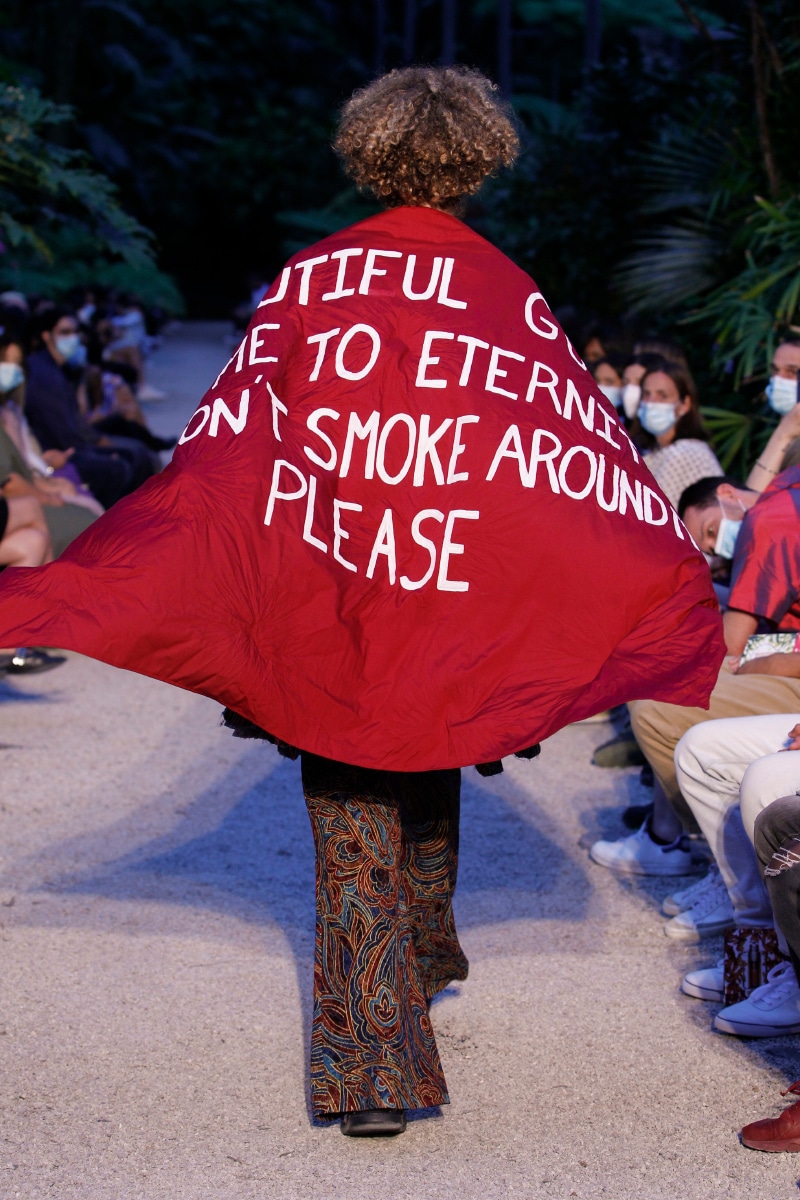
What do you think it takes (and it’s missing) for Portuguese brands to make the definitive jump to the international fashion market?
I believe Portugal has everything a brand needs to start. Portugal is known for its industry and I don’t think it is a bad thing but a lot is reduced to that, although we already have good brands, amazing platforms to show our work and incredibly creative people, the world is not seeing us. Maybe it’s a bit silly or maybe just because I’m still a student, but I do believe we need something like the Antwerp Six for the world to start paying attention to us. If we show that we aren’t only brands and industry, maybe they will start to look at us and fashion students may be a good solution because a lot of us are very creative and we still don’t have “bad habits” of working in fashion. Most of us never show our work to the world due to the fact that most people don’t give credibility to fashion students because we are young, sometimes naïf or maybe we are not doing what it’s trendy (because we are looking further). I already saw a lot of people saying to fashion students that they are not great because they aren’t doing what it’s trendy or what is suppose to do and one or two years later someone appears doing the same thing but the difference is that someone believed in them. And another important thing is that we need more than one person to do that jump, to benefit all.
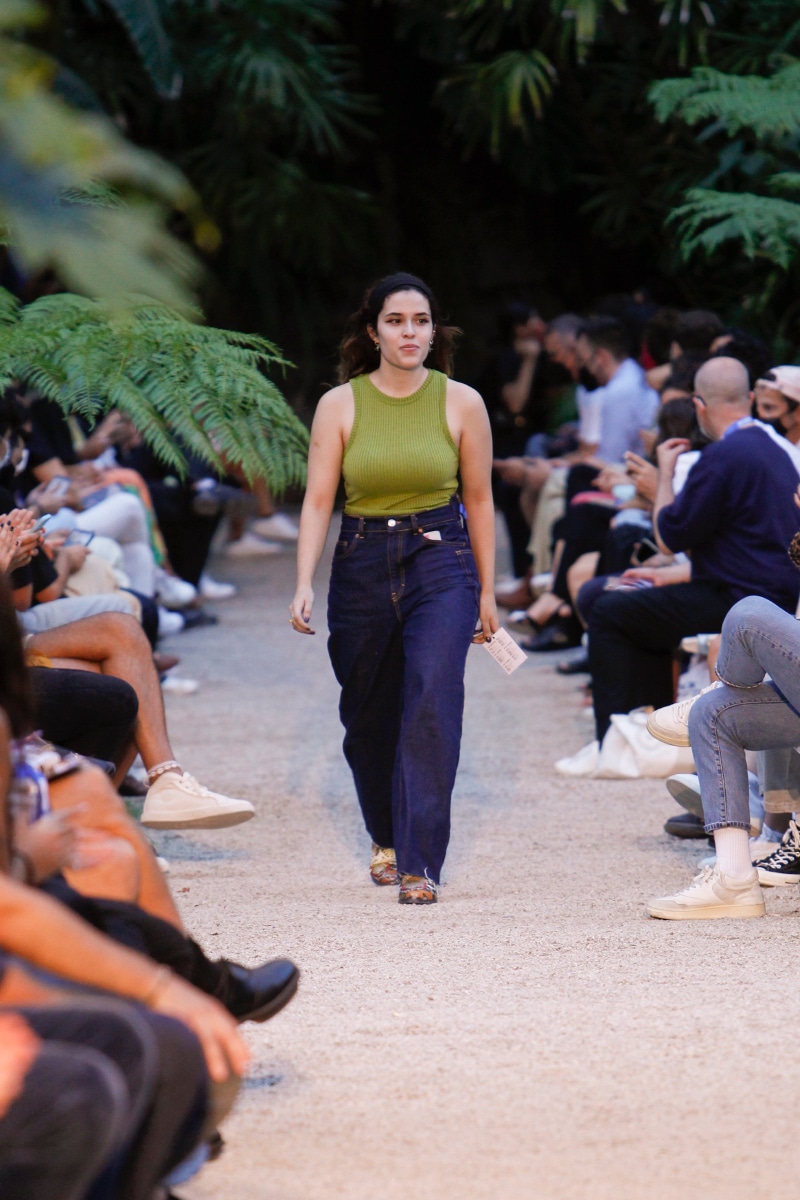
What’s next for you?
Well, what’s next for me? In the very close future I will start doing my final collection of my bachelor’s and my internship, after that I want to explore the world, I want to study and work abroad. I still have a lot to learn and to do, before starting my own brand if I start my own brand but something I’m sure about is that, whatever I will be doing, I still want to show my utopia to the world, even if it isn’t through fashion.
João Sousa
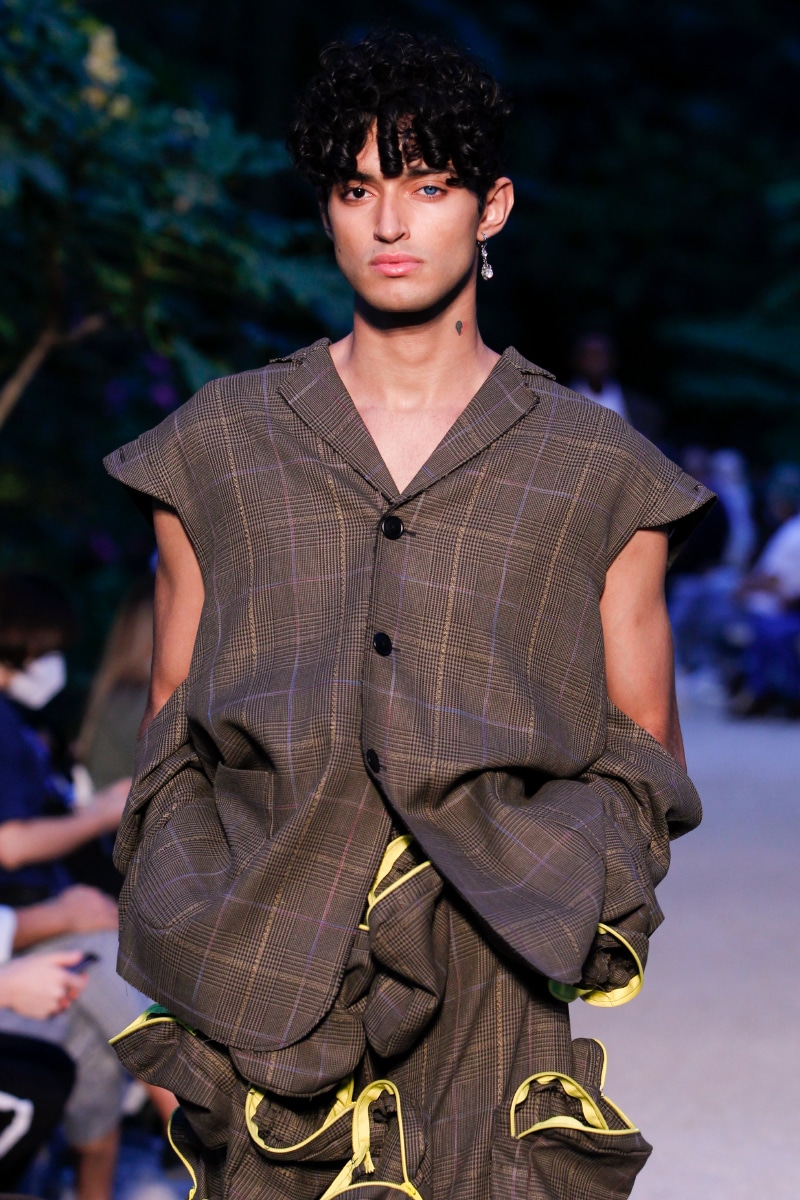
Tell us a little about yourself. Who are you, where do you come from?
My name is João, I’m from Porto, born and raised into a family of farmers, pattern makers, and seamstresses. I learned from an early age the most varied techniques within these areas, but, in reality, what I like most is walking in the countryside, with the animals. The taste for fashion came later, but the love for animals always spoke louder. I’ve always traveled a lot, which helped me to develop my general knowledge a lot. My parents have always provided me with moments of learning, both artistic and cultural. With them I watched movies, plays, visited museums and churches… in reality, we visited different lands and went to all the tourist spots we could! These experiences allowed me to see many different people, with different ways of being and living. It was when I got to know the world that the taste for the arts spoke more and more loudly, and the idea of following a course related to this area began to make sense, making a connection with fashion.
What led you to present yourself to SANGUE NOVO?
My presentation at SANGUE NOVO is the realization of a goal and a dream that I always wanted to achieve. However, this dream came about, thanks to the impulse of a large group of teachers, who convinced me and helped to organize and present my collection, who trusted my abilities, my instincts, my ideas and taught me everything they know for this collection to carry out. I still do, as I finish a course and I’m still a young fashion designer, with ideas and visions that I want to show the world. The best place to show what I’m worth is at MODA LISBOA, where I get the necessary support and the opportunity to show what I can do best.

What is the concept of this collection that you present at ModaLisboa?
My concept for this collection is something as simple as showing an unknown side of what was one of the greatest American artists, Basquiat. It brings together, not only a vast work but a huge life story, which, for me, is such a source of inspiration that transcends the importance that the artist’s work has. This collection thus brings together three different styles: streetwear, workwear, and the classic that I combined with the experiences and ideas that, during his life, Basquiat defended. It is also a representation of a personal opinion about what is really important in all of Basquiat’s history and work.
Why Basquiat?
Basquiat emerged as a concept because, for me, it made sense to develop this collection. Faithfully following my instinct, I developed this collection thinking of an artist I admire and who captivates me so much. It also emerged as a form of expression and permission, as it facilitated and allowed me to develop pieces with a greater mix of shapes, deformations, exaggerations, and mixtures.
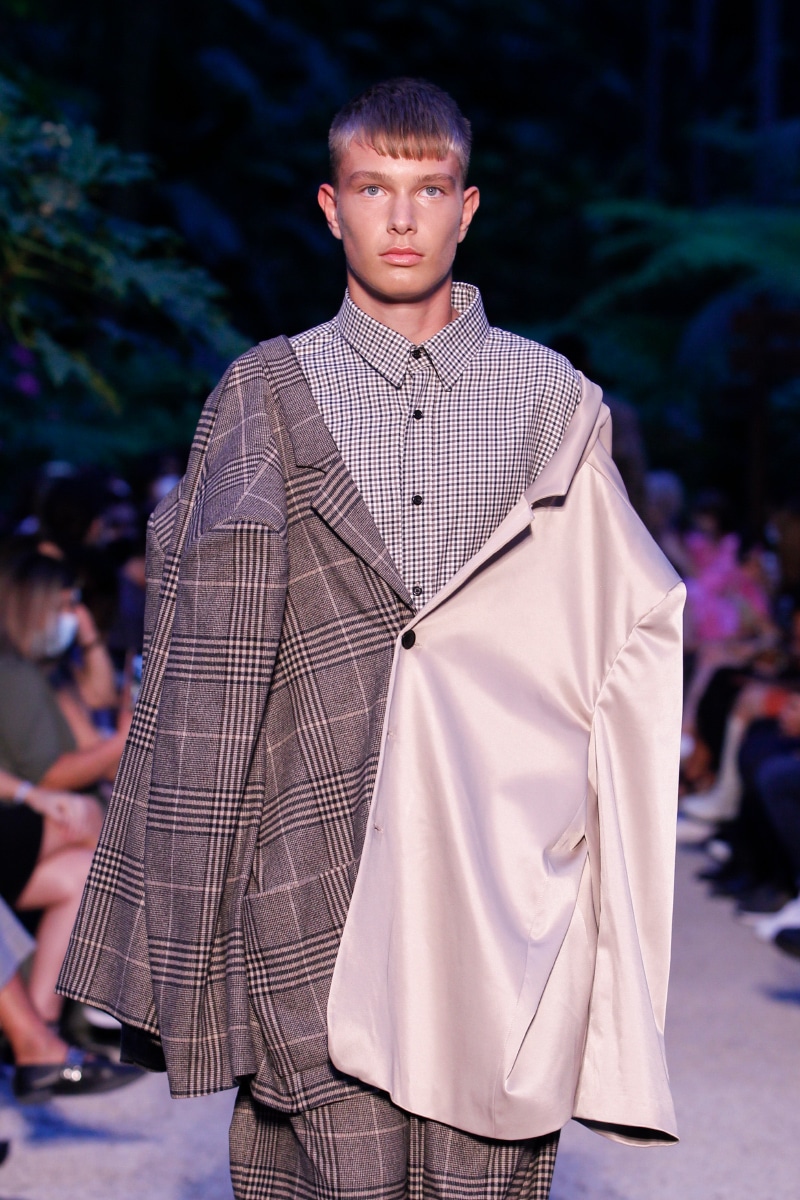
What was your process for finding materials? Did you take into account the sustainability factor?
Fabrics are, for me, the most important point in the development of collections. It is with them that the collection will take on the shape I idealize for the different pieces. I take into account the colors I want, the patterns, textures, and the shine of the fabrics. However, I still take into account their weight and characteristics, as I think about what will happen to them when I make them when they go to wash or even iron them. The materials are, after all, what I most consider when choosing fabrics, but even so, it’s not very easy for me to specify a way to choose a fabric, it takes a bit of the sensitivity and thought of each one and it depends on what you want to do with it. Although there is more and more talk about using sustainable products, I admit that this part, for me, was a little left out. I’m not saying it’s not something very important, however, as a new designer, I feel almost obliged to present 100% sustainable collections, in a world where sustainability is available in small quantities, taking into account the price/quality ratio. In this specific case, the Basquiat collection, despite not having sustainable products, was developed with some used fabrics, from factories that closed and saw their products standstill without a specific purpose.
What do you think it takes (and it’s missing) for Portuguese brands to make the definitive jump to the international fashion market?
For Portuguese fashion to have a greater international impact, it is necessary to be proud of what is produced here. We are one of the countries that produce the best textiles, where we have a wide range of fabrics with different characteristics. We have excellent quality, whether in the production of shoes or in the manufacture of pieces, which are appreciated in various parts of the world. Above all, there is a lack of support, whether for new designers or for the designer who already has a big name in the market. There is a lack of support and visibility. Believing and trusting the instincts and creations of Portuguese designers is essential. Portugal has everything to be huge and so that fashion brands can grow, but I feel that many times there is neither the possibility nor the facility to do so.

What’s next for you?
Good things, I hope! I am currently taking a master’s degree in Clothing and Textile Design. Once this stage of my life is completed, I hope to get an internship and, in the future, to work. Initially working for someone else, then maybe a brand with my own name. Within design, textile manufacturing and modeling, I will continue to follow and do what I like. I also know that I will continue to develop collections with my vision and ideas, whether they are more conceptual or not.

